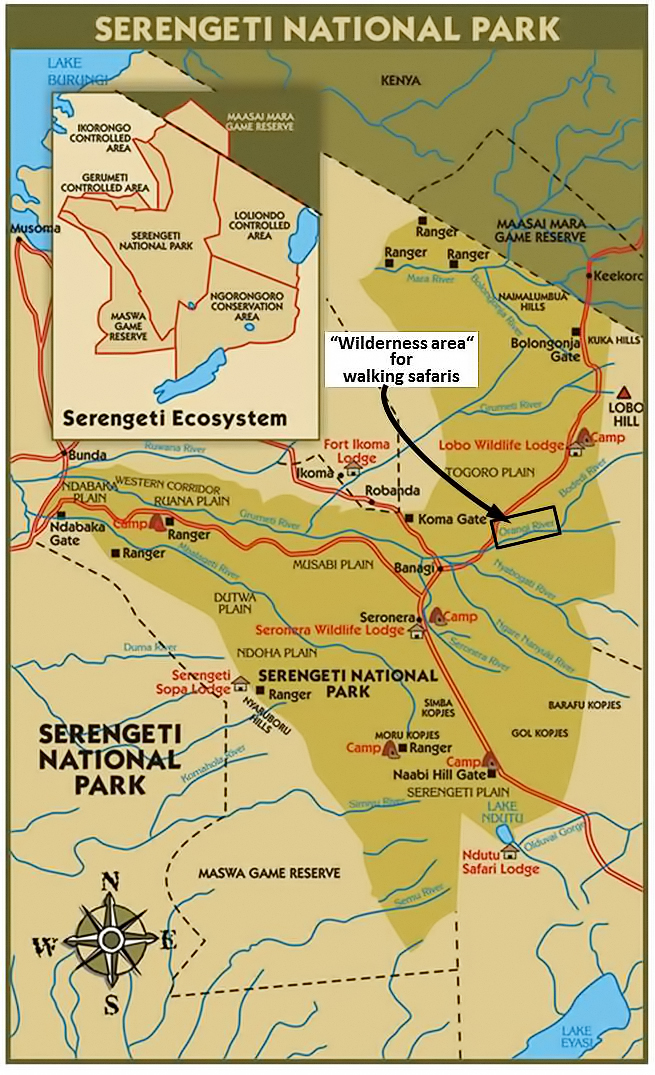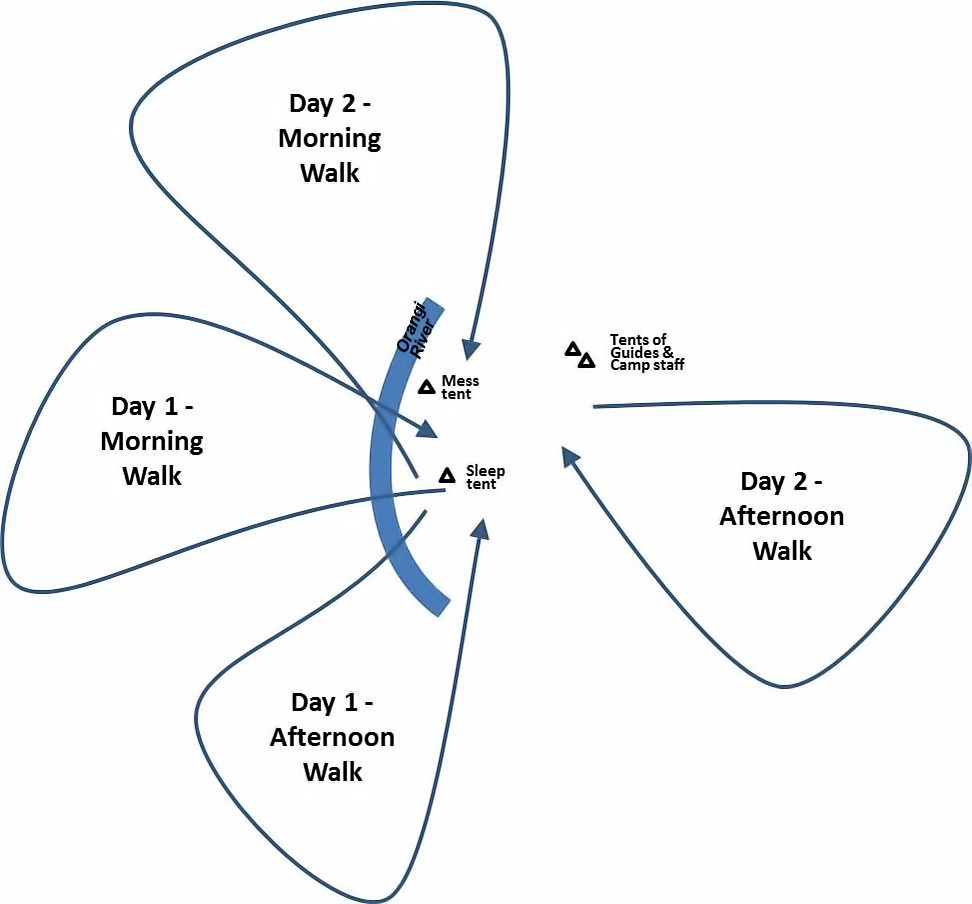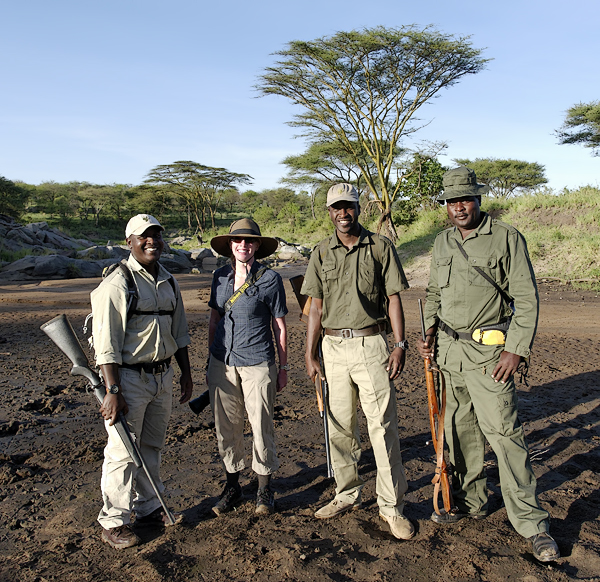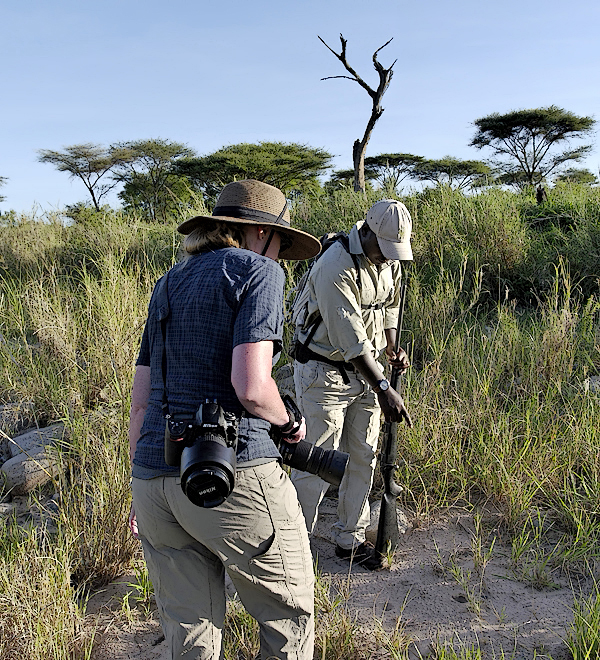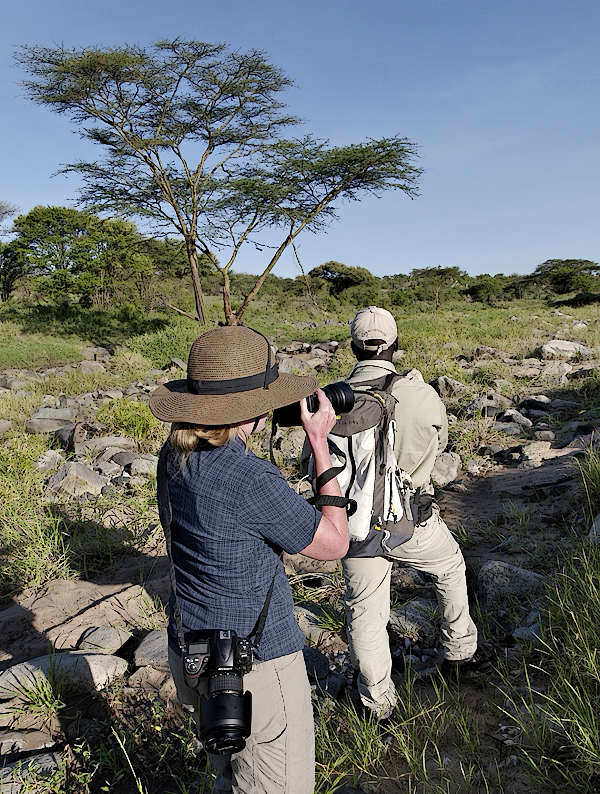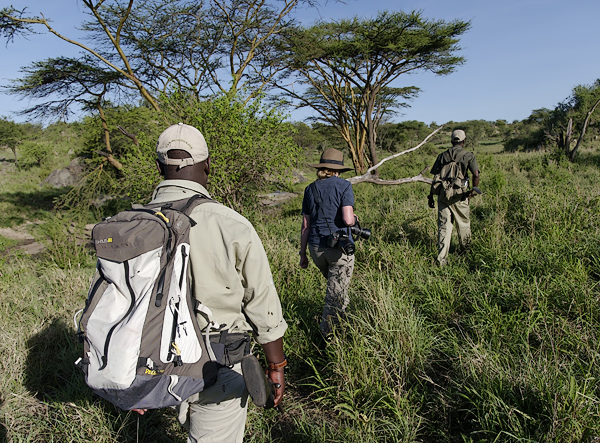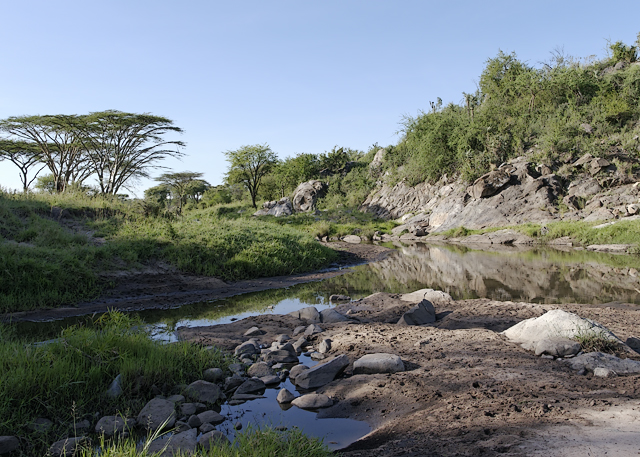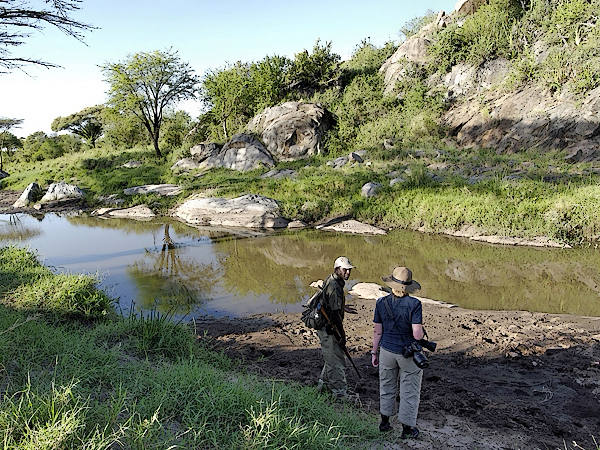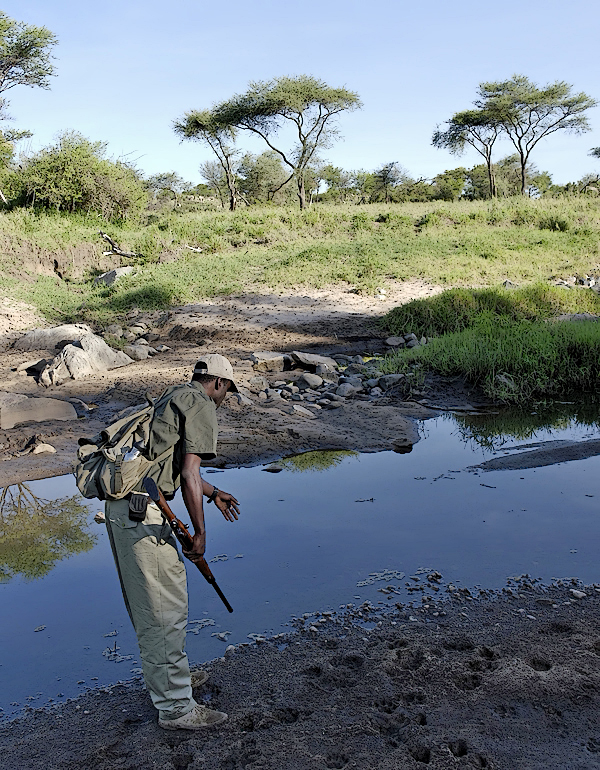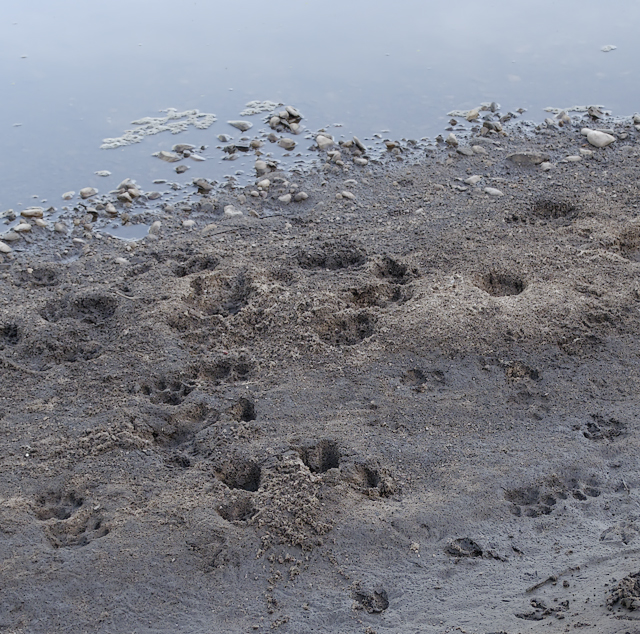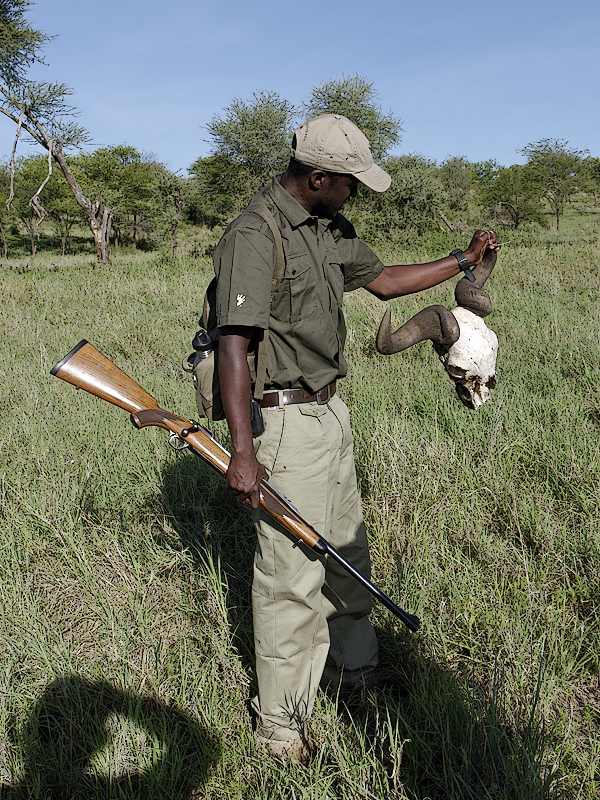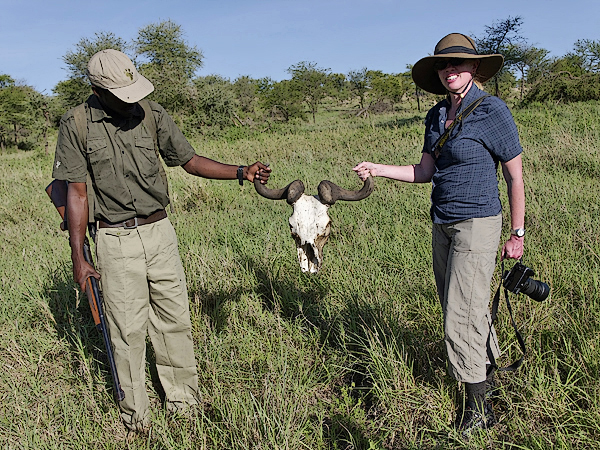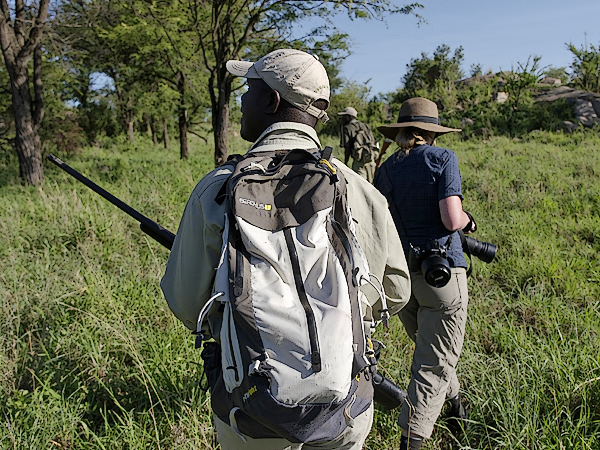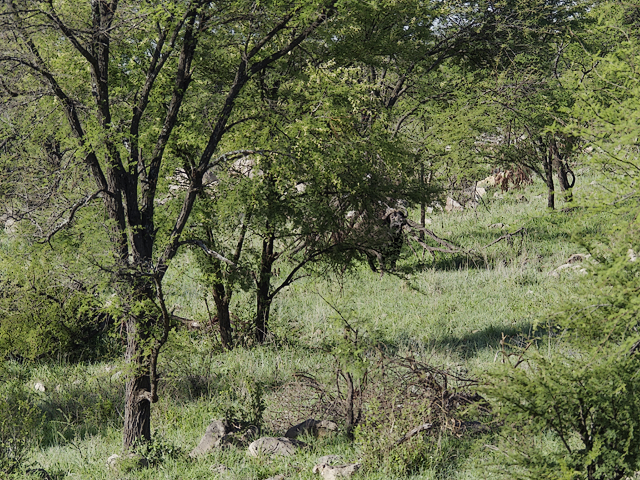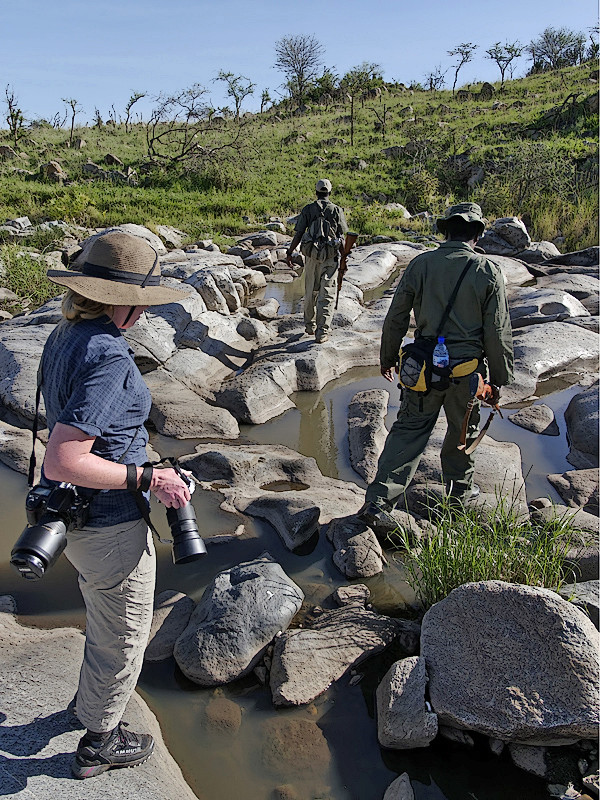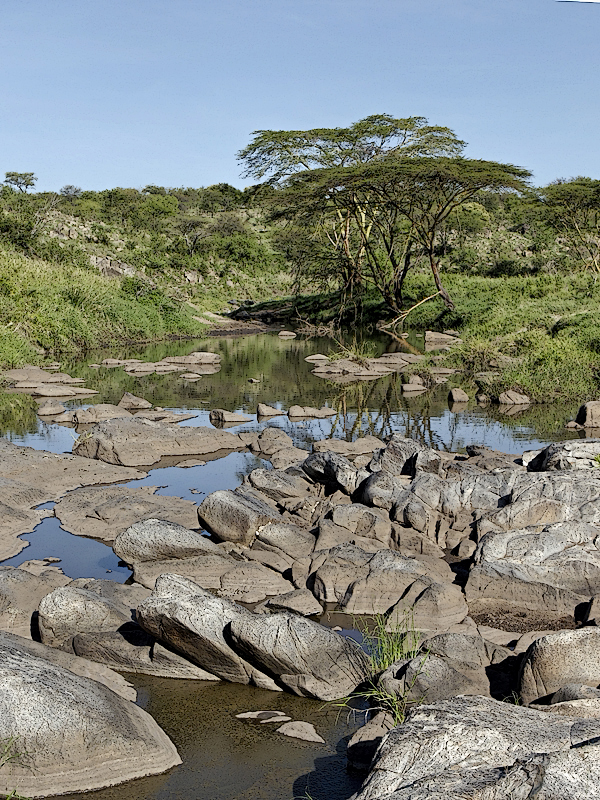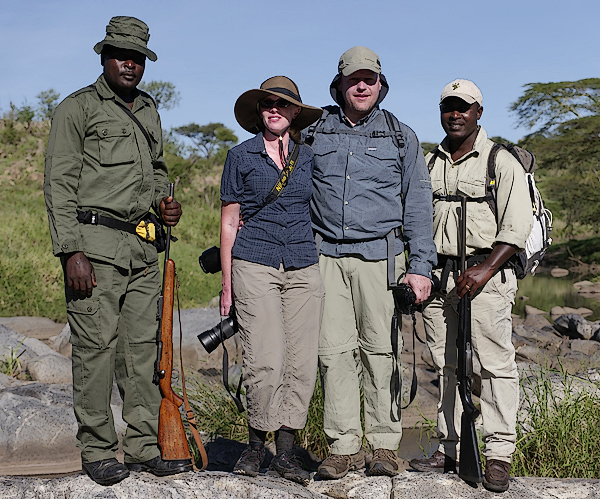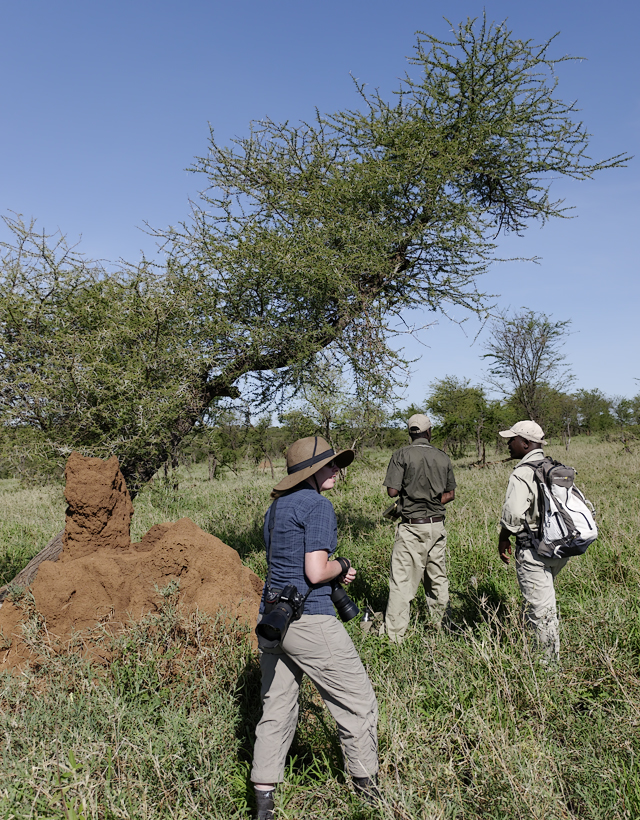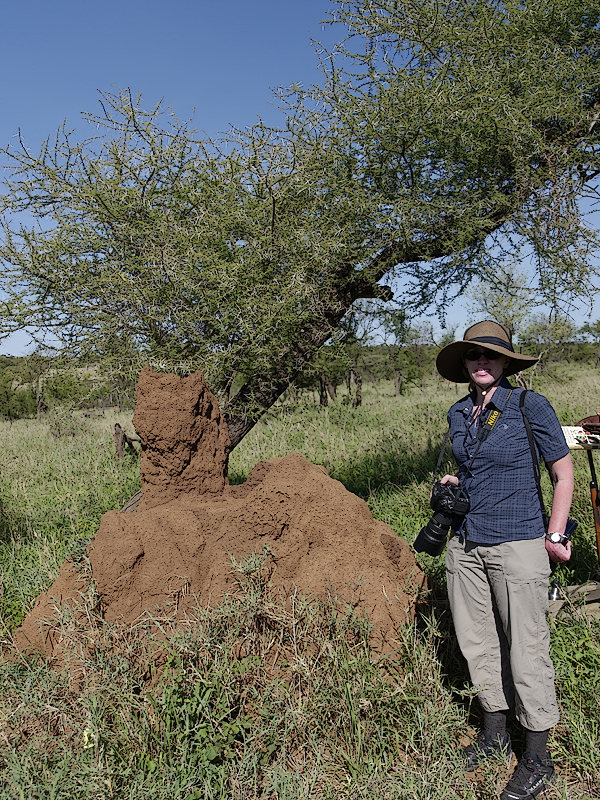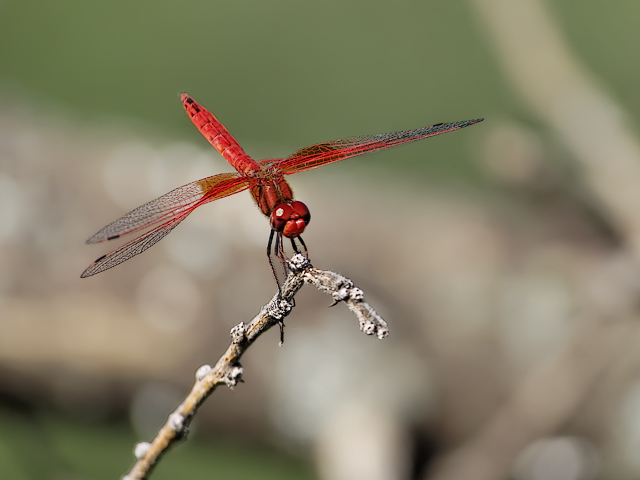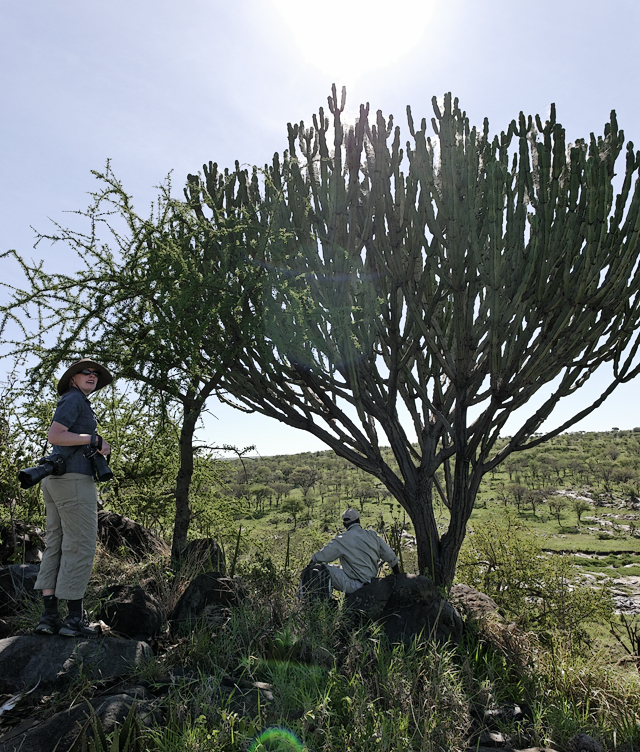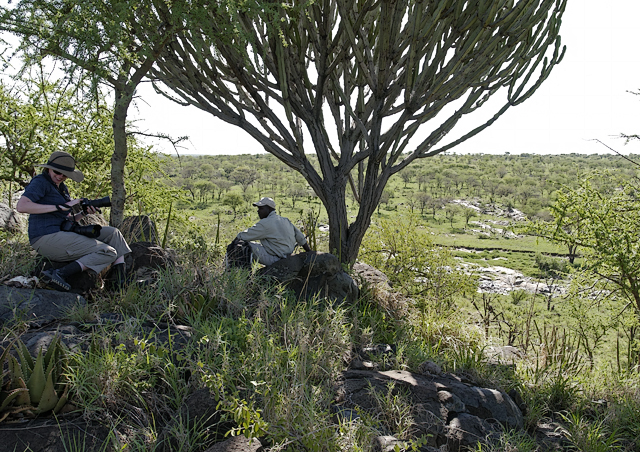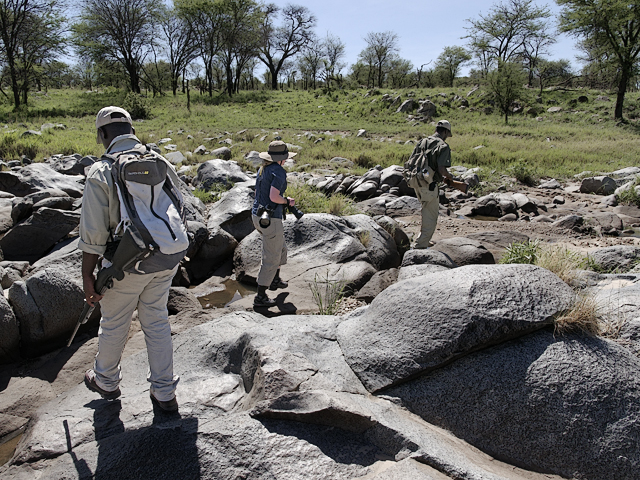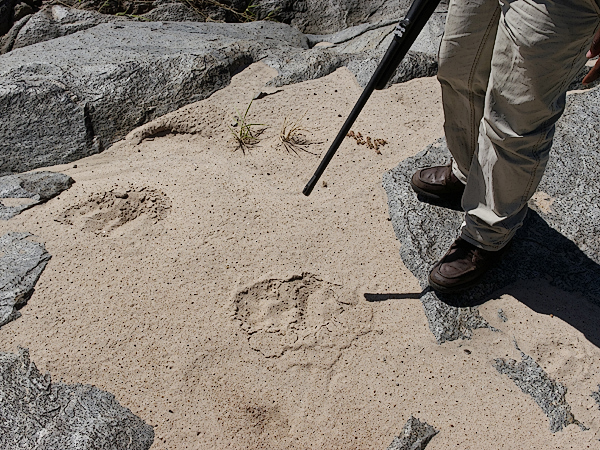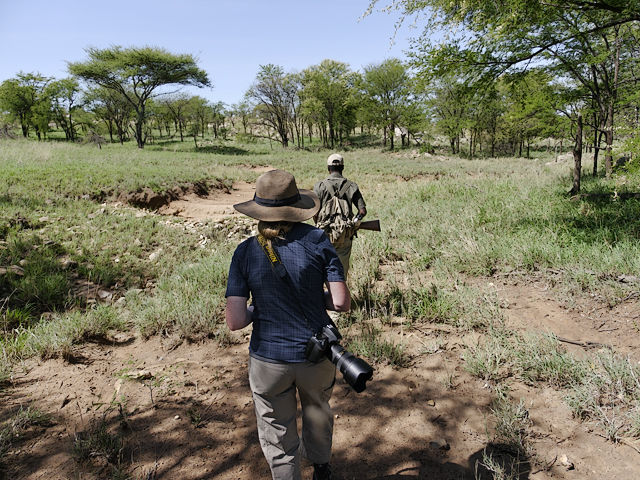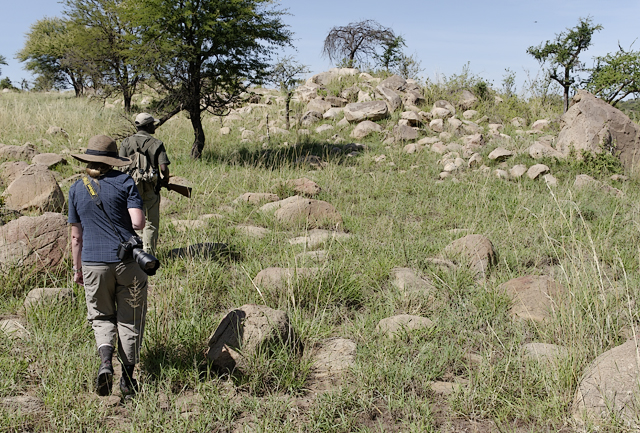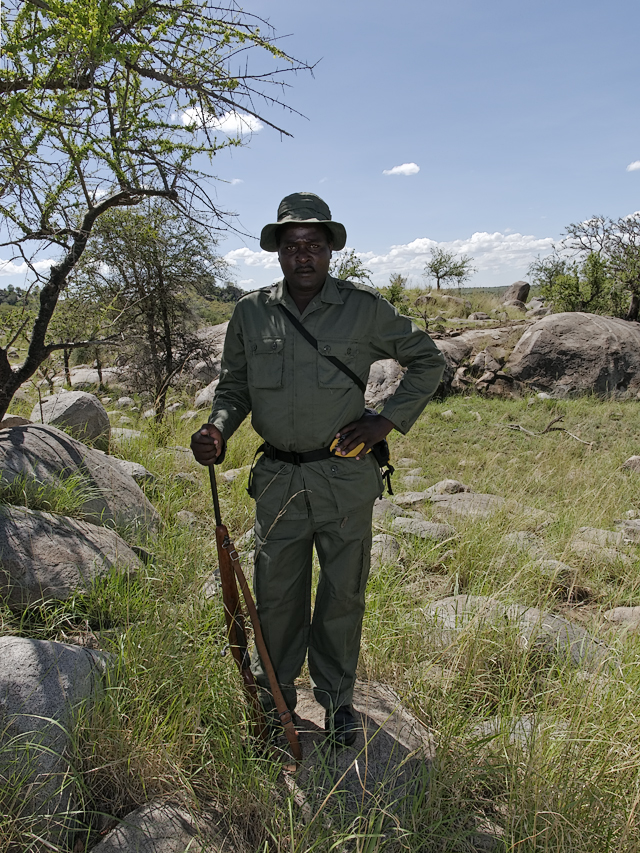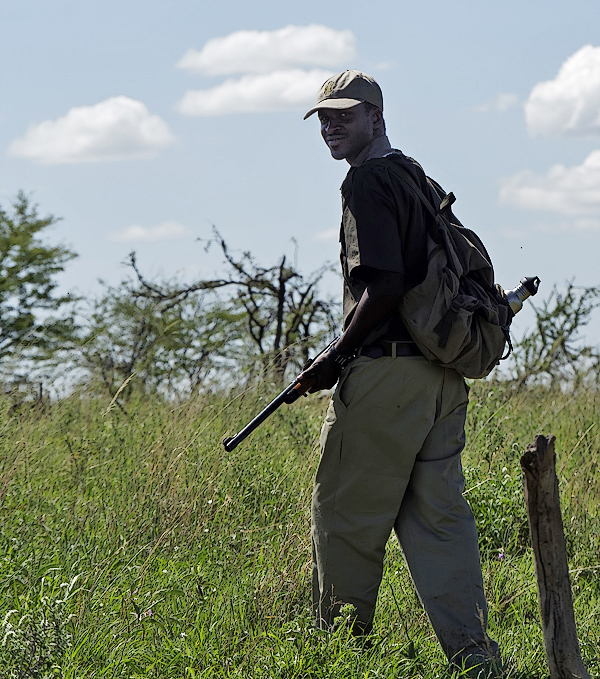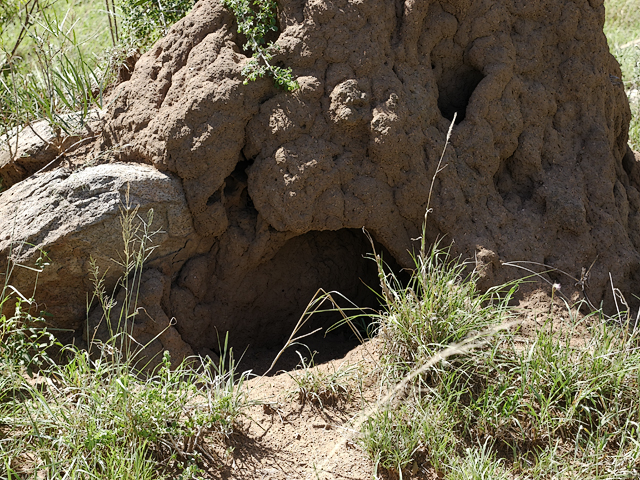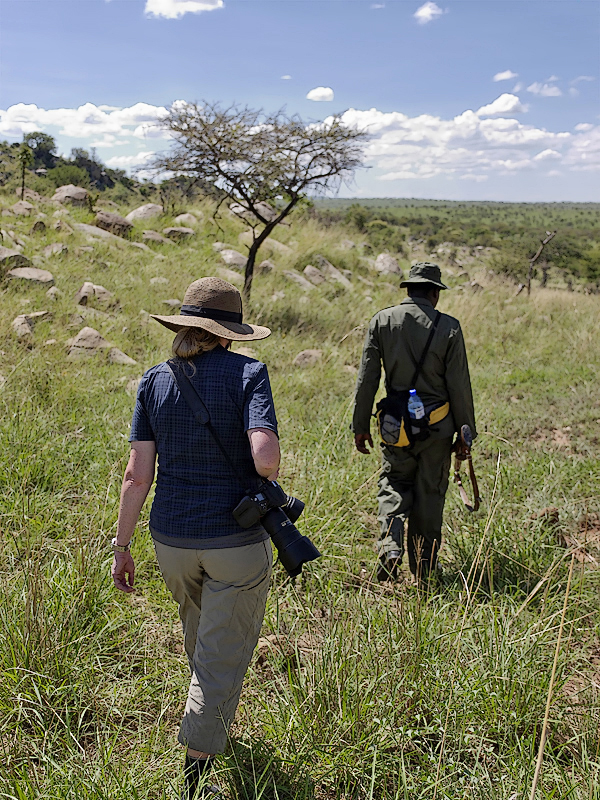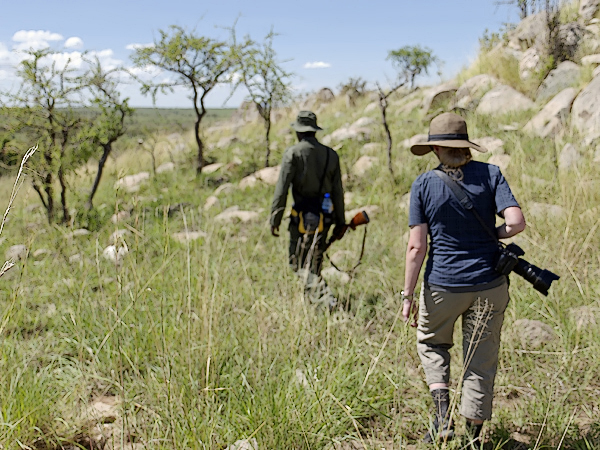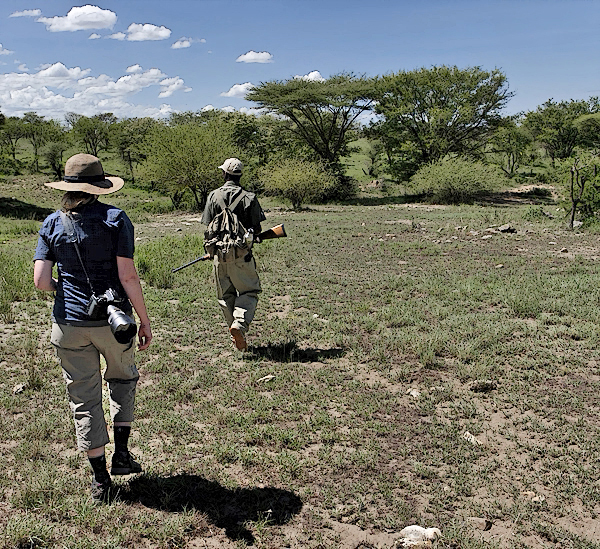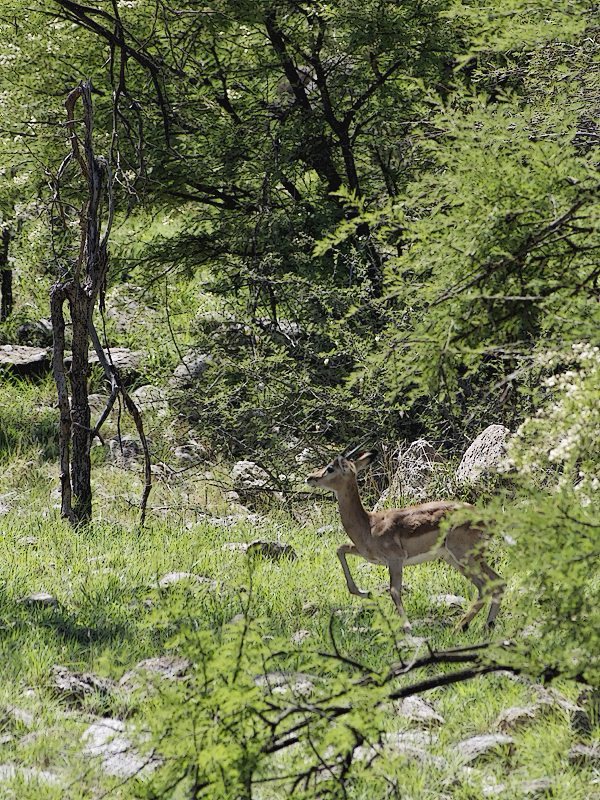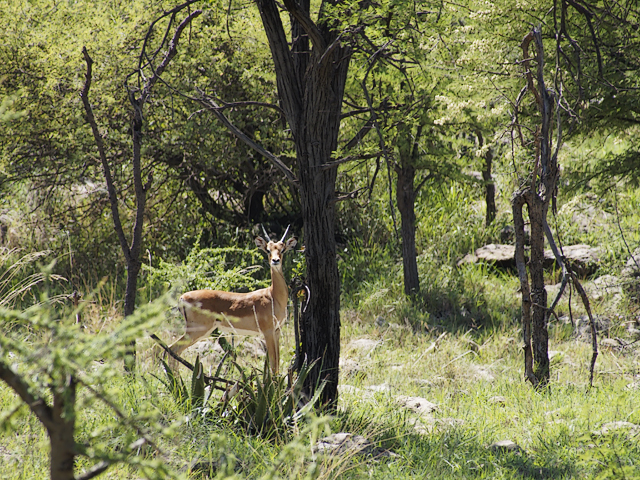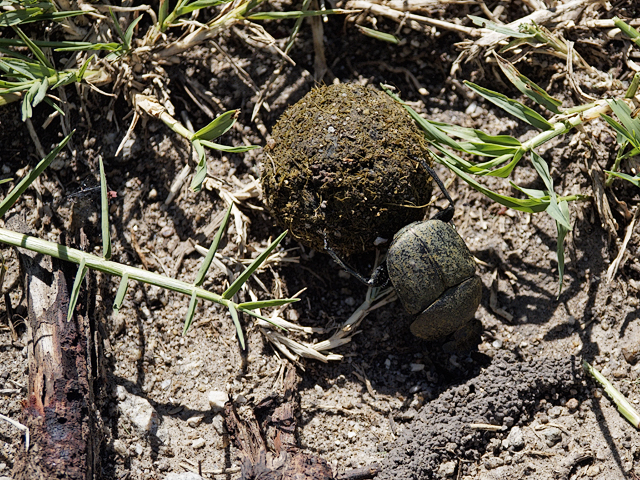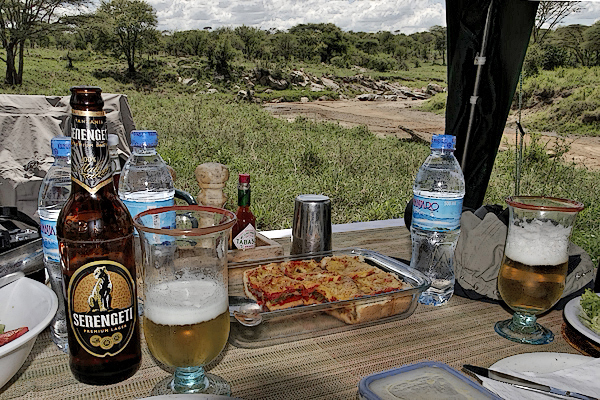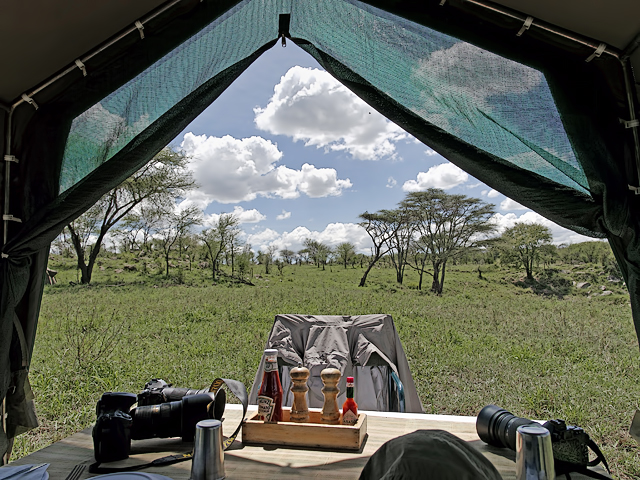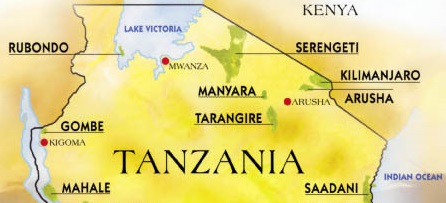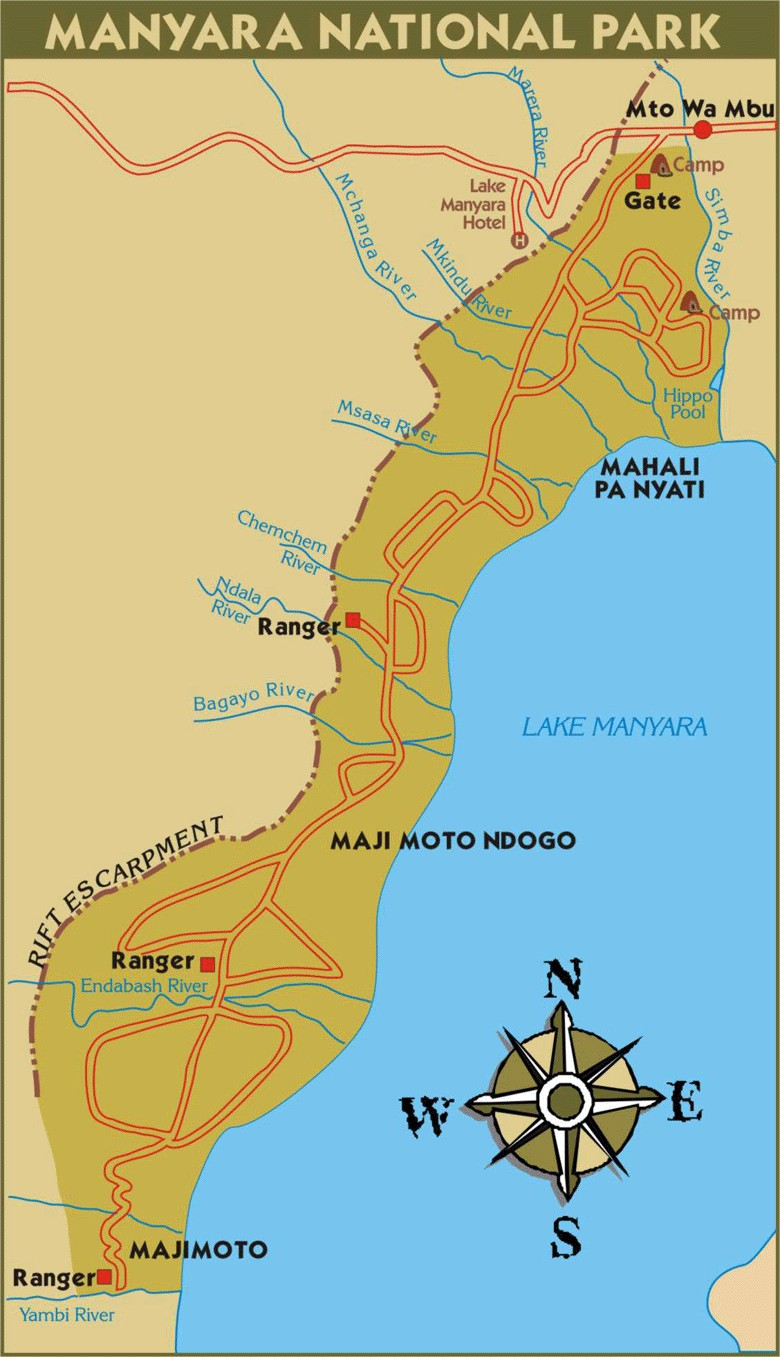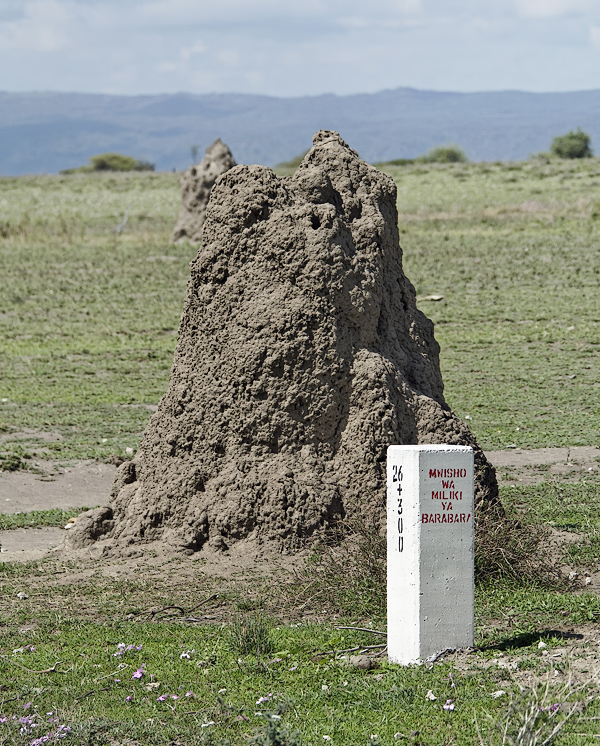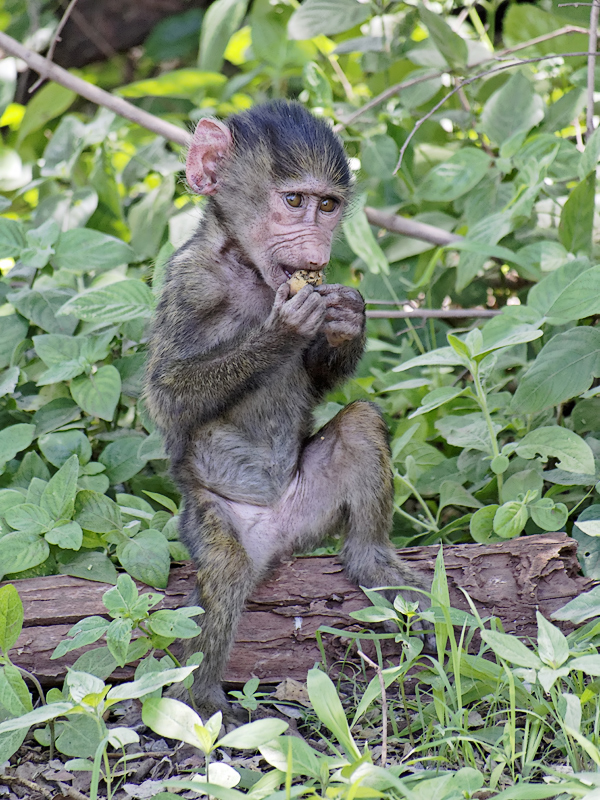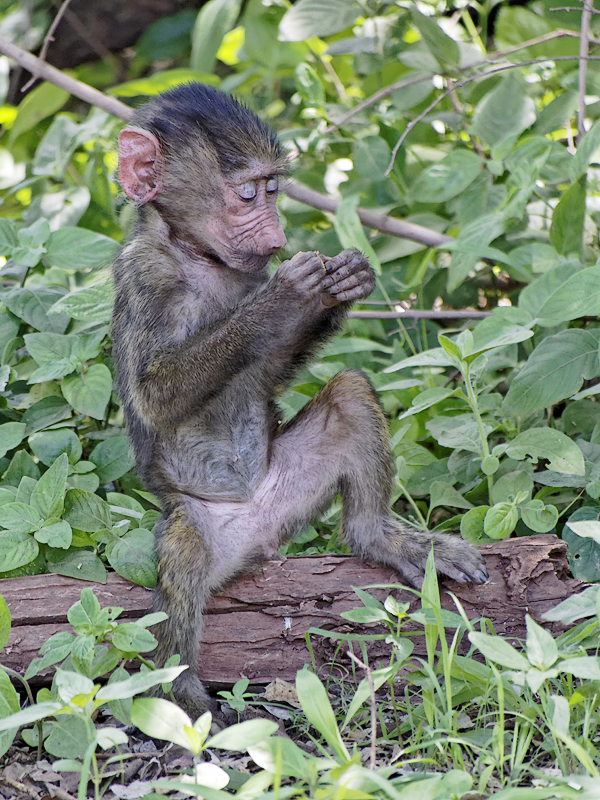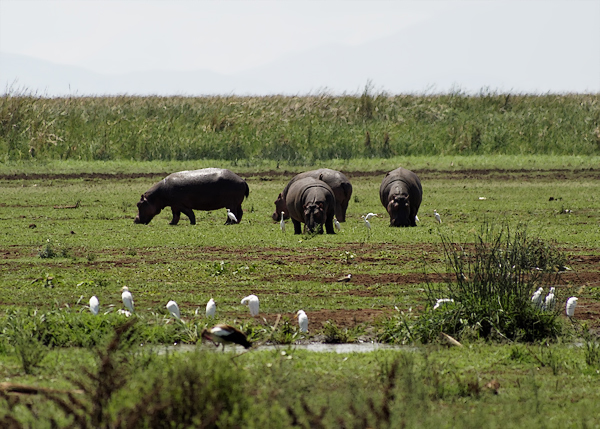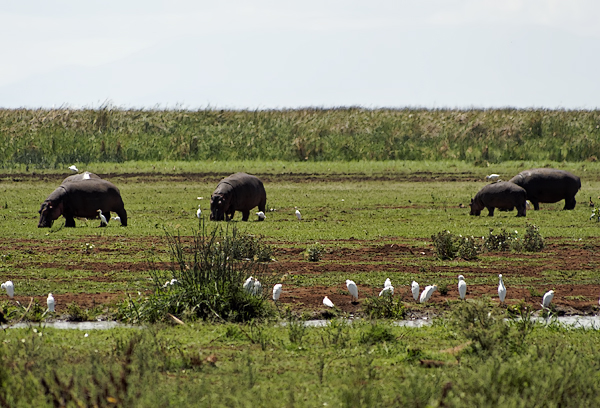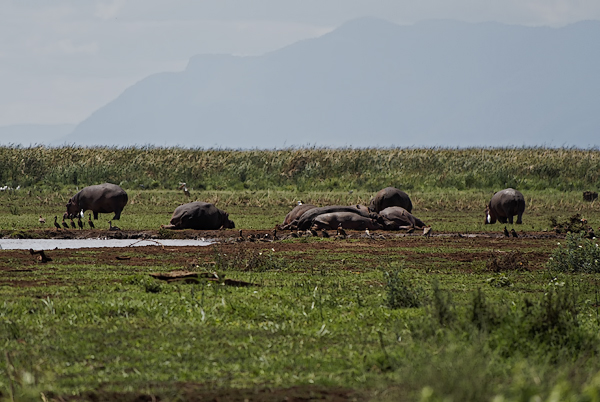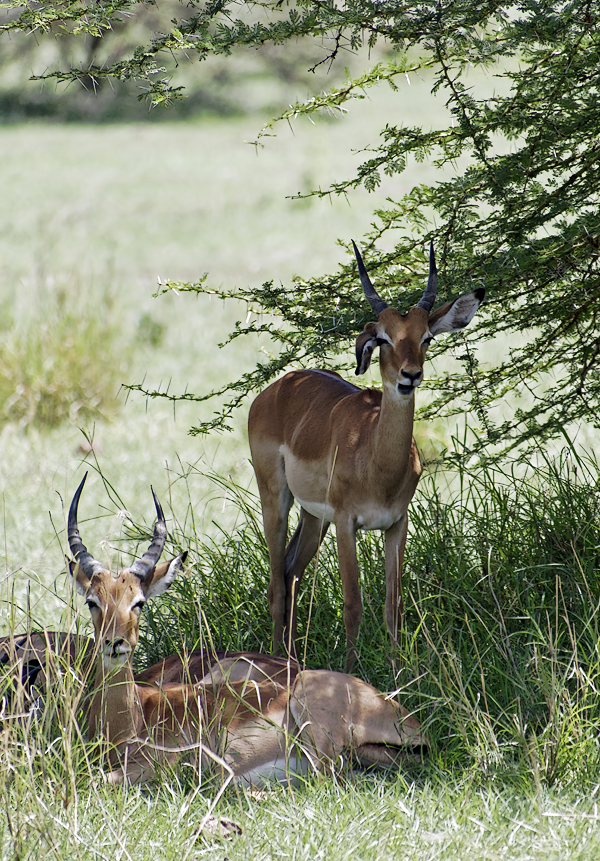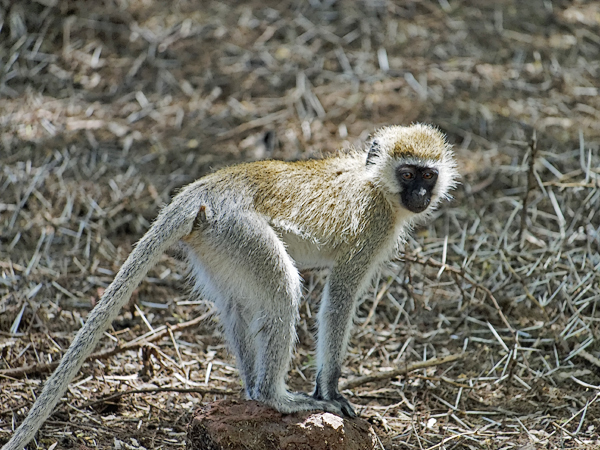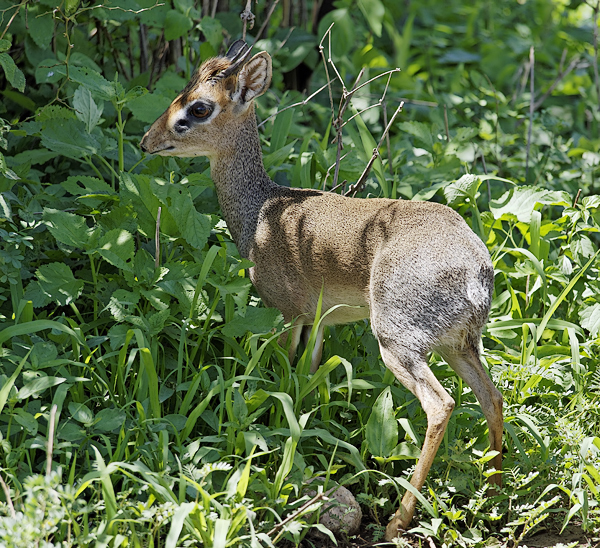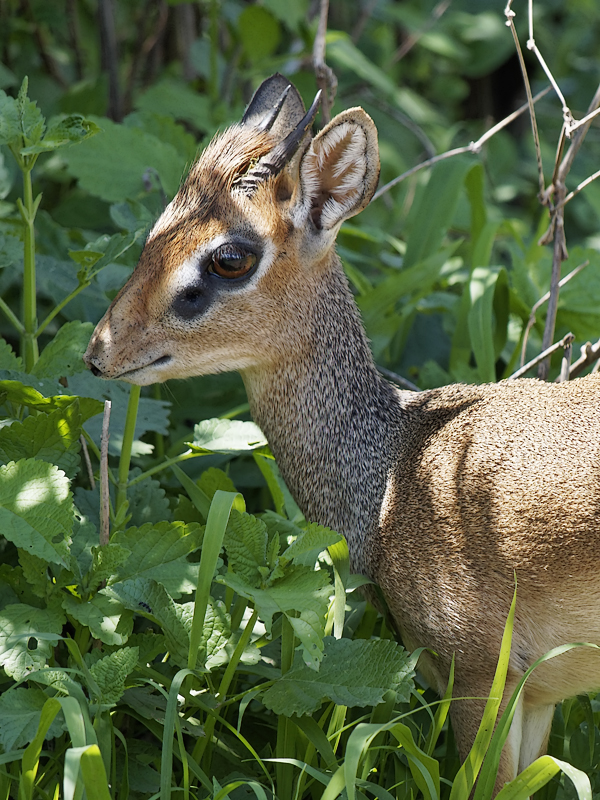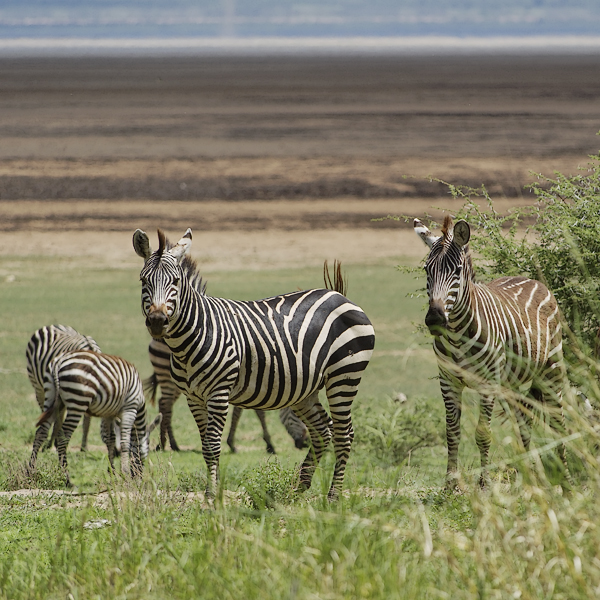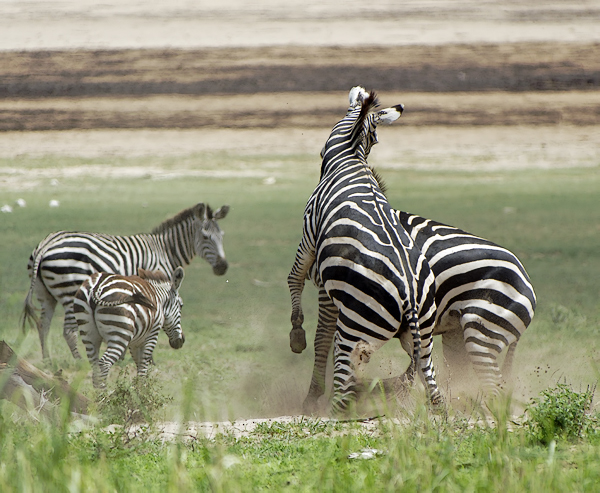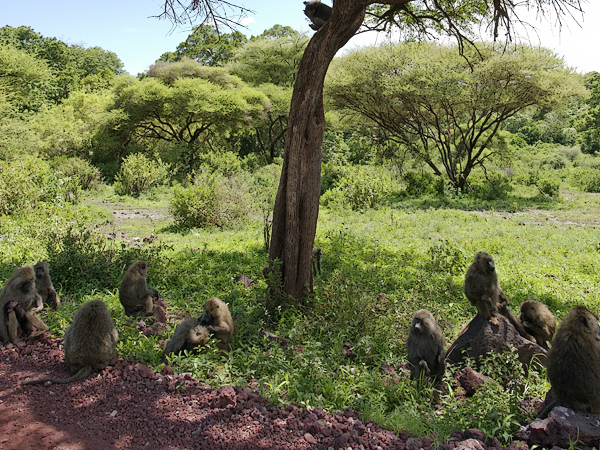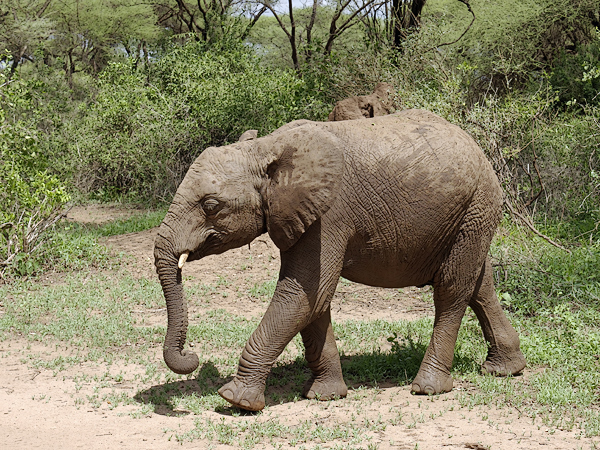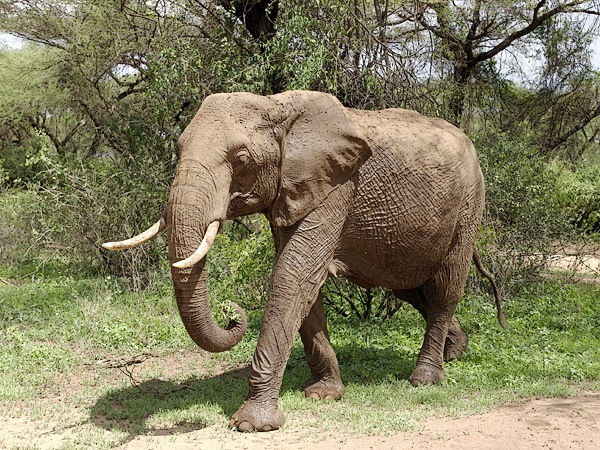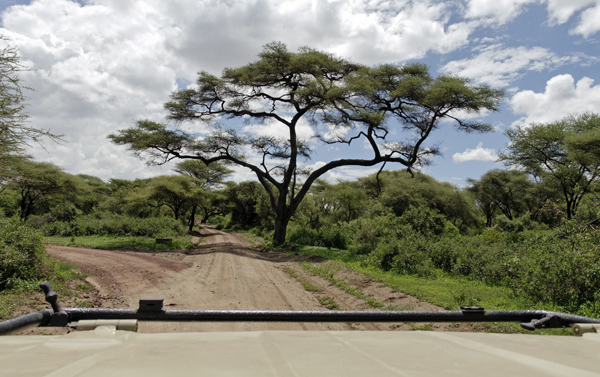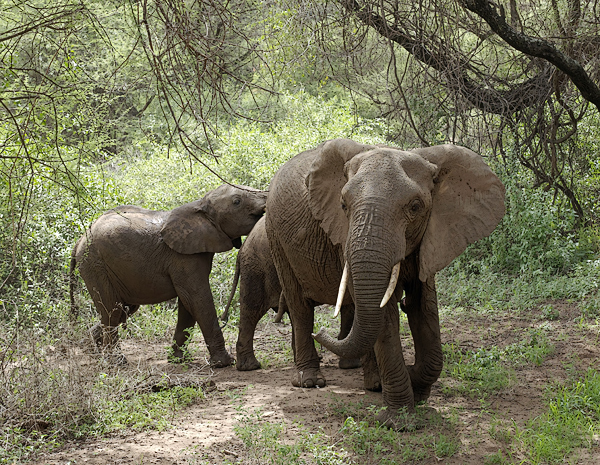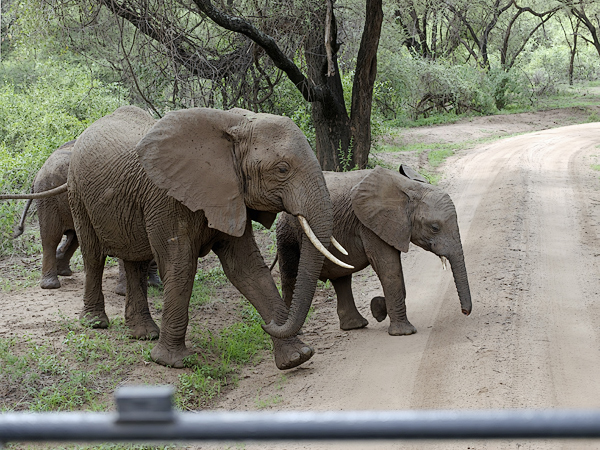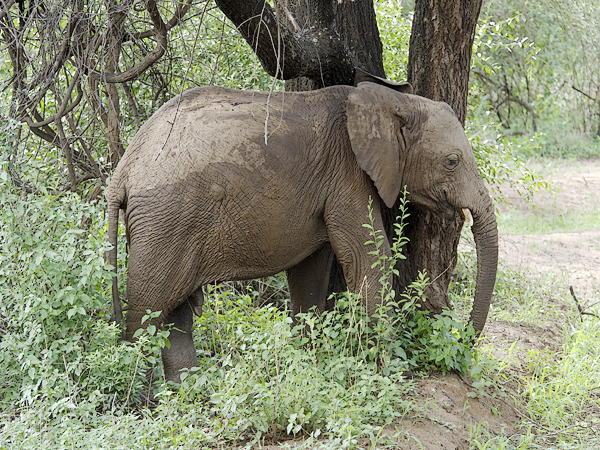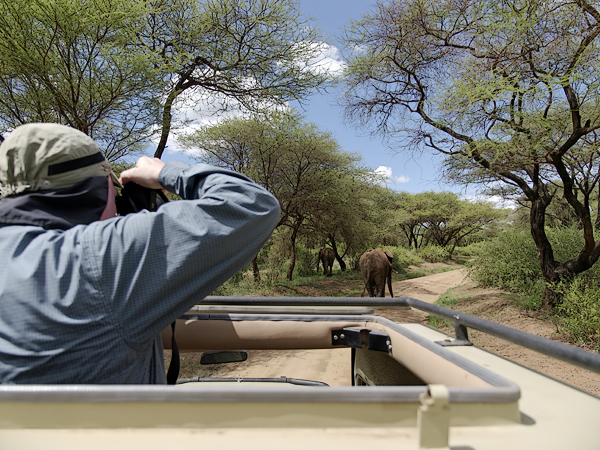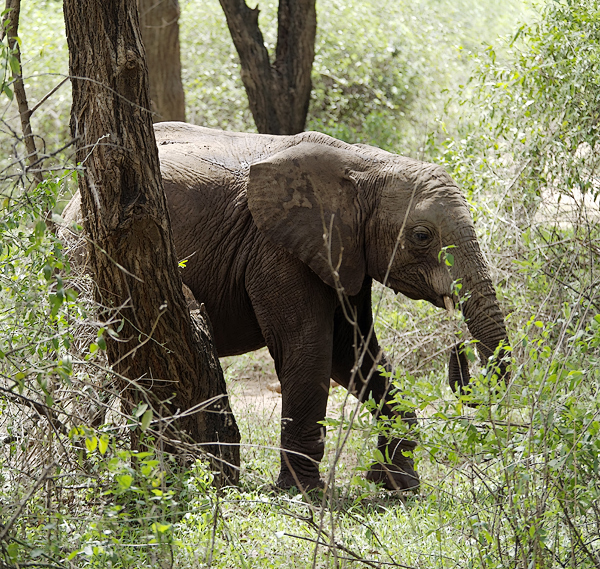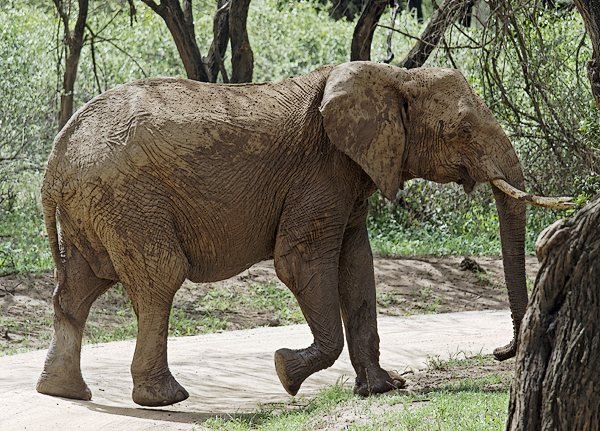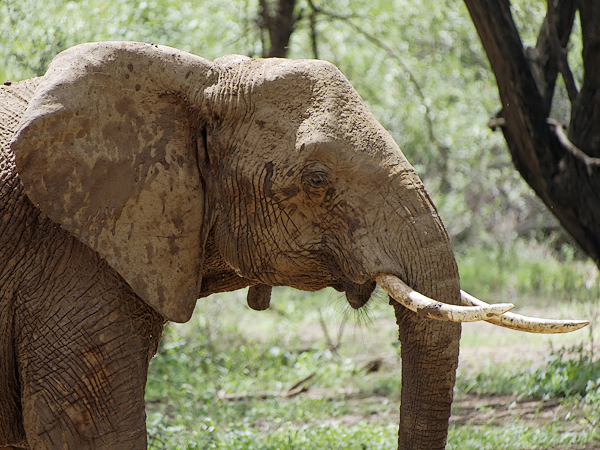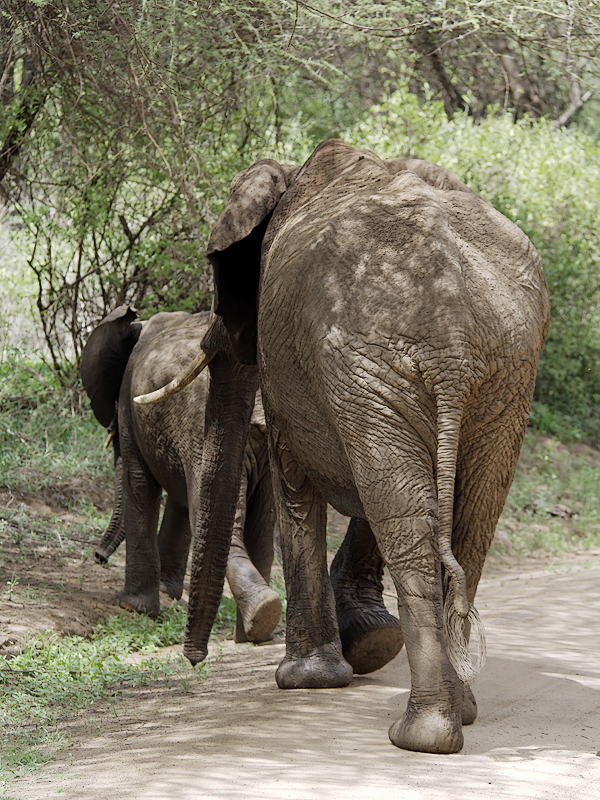Tanzania Holiday 11: Serengeti Walking Safari Day 1 - Afternoon
 Sunday, June 30, 2013 at 6:00
Sunday, June 30, 2013 at 6:00 At this point on our safari, we had driven in to Serengeti National Park to a camp off-road. In this designated "wilderness area", our guides would take us on walks through plain and brush, to see the Serengeti on foot:
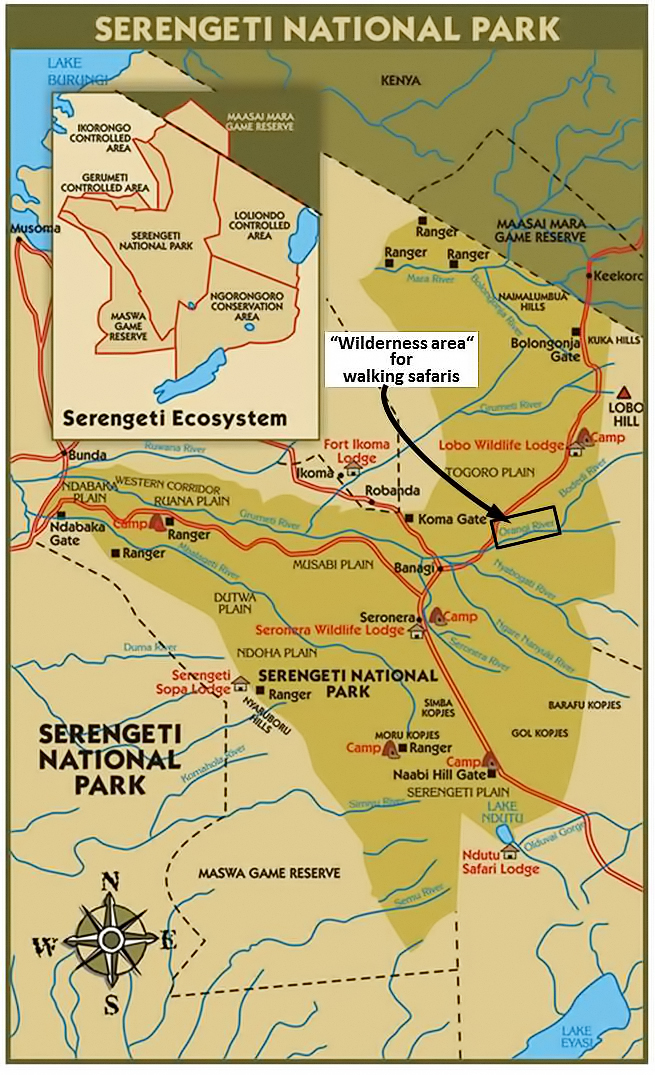 Source: tanzaniawildlifesafaris.com
Source: tanzaniawildlifesafaris.com
This was the first of two days for walking. We already had our morning hike, with hippo tracks, hyena tracks, a water buffalo (both live and a skull on the ground), and a termite mound. This post is about the afternoon on Day 1:
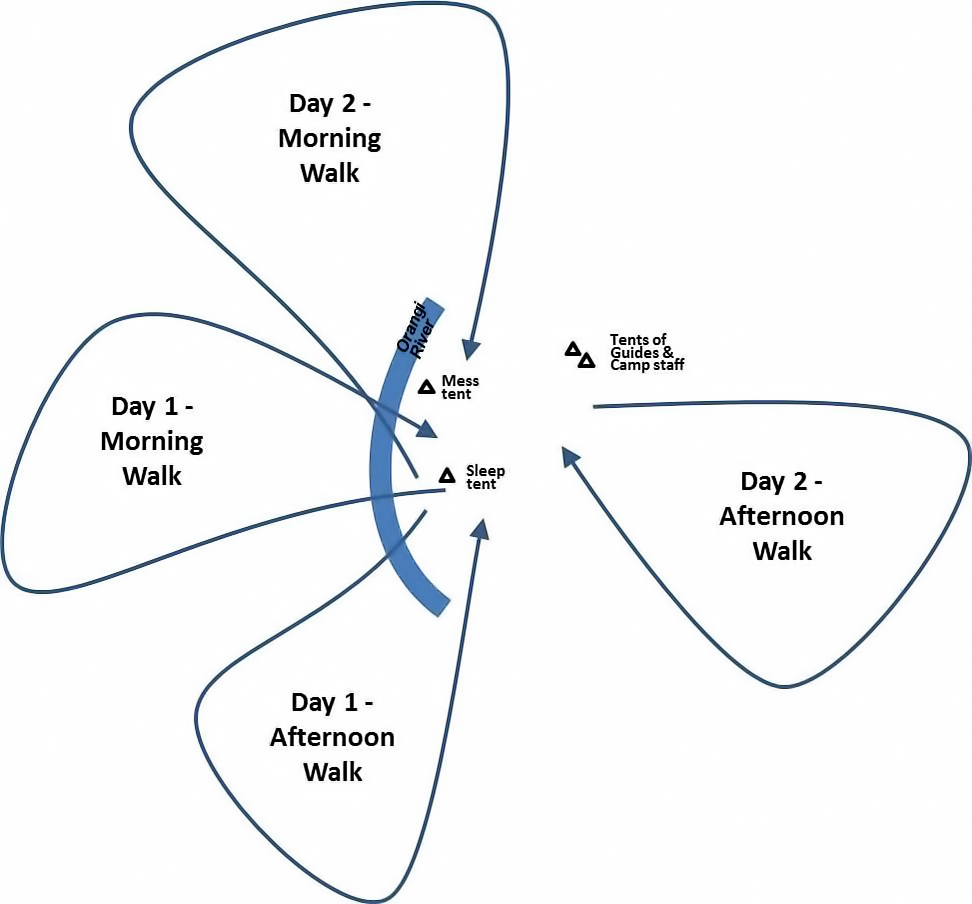
After lunch and a rest, we met again on the banks of the Orangi River. This is Daniel, our Park Ranger:
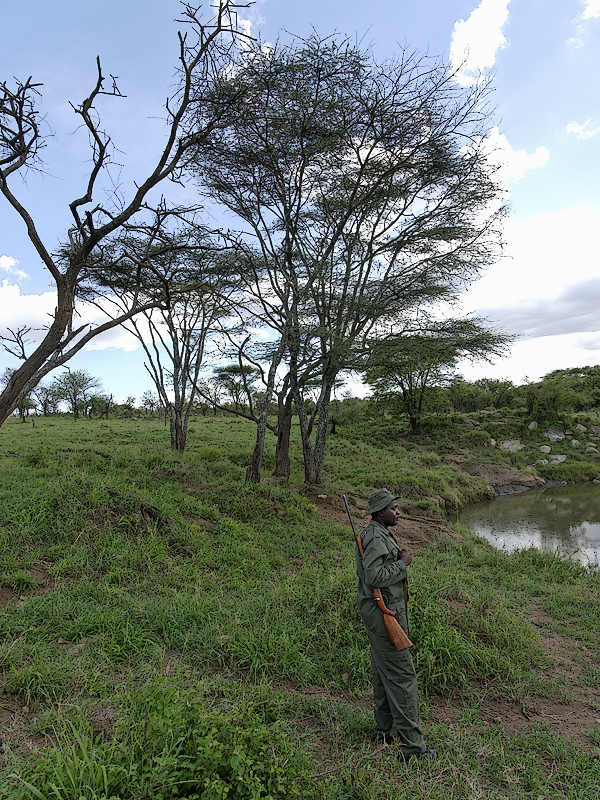
Our main guide Prim took the lead. He always likes to look at recent animal tracks in the damp riverbed:
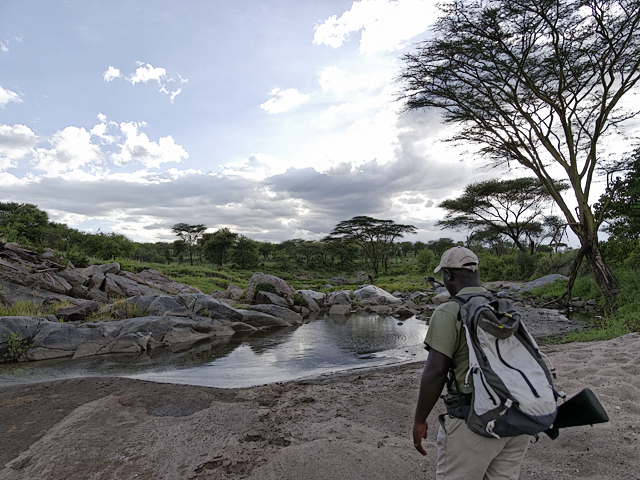
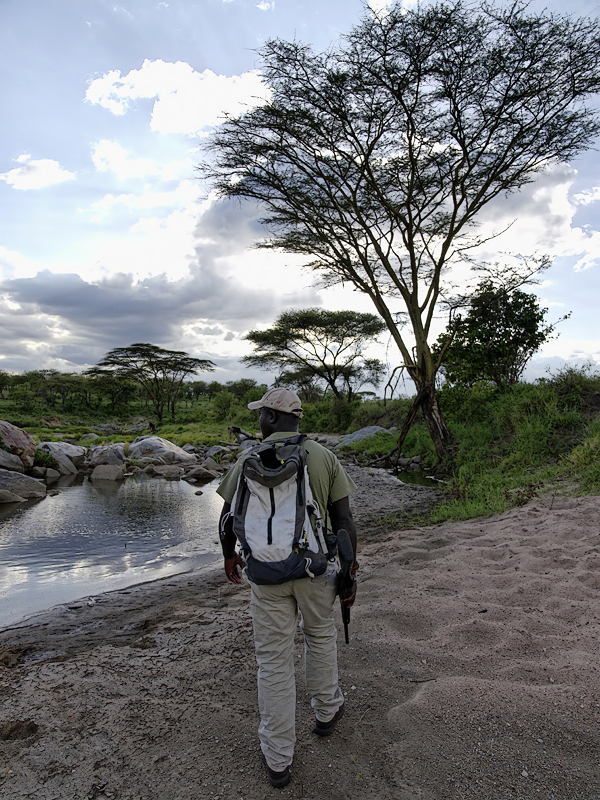
Frau A followed Prim, and I was behind her. It was becoming a bit cloudier with a risk of rain.
December is the short rainy season in Tanzania, and it often rained a bit in the evenings when we were there.
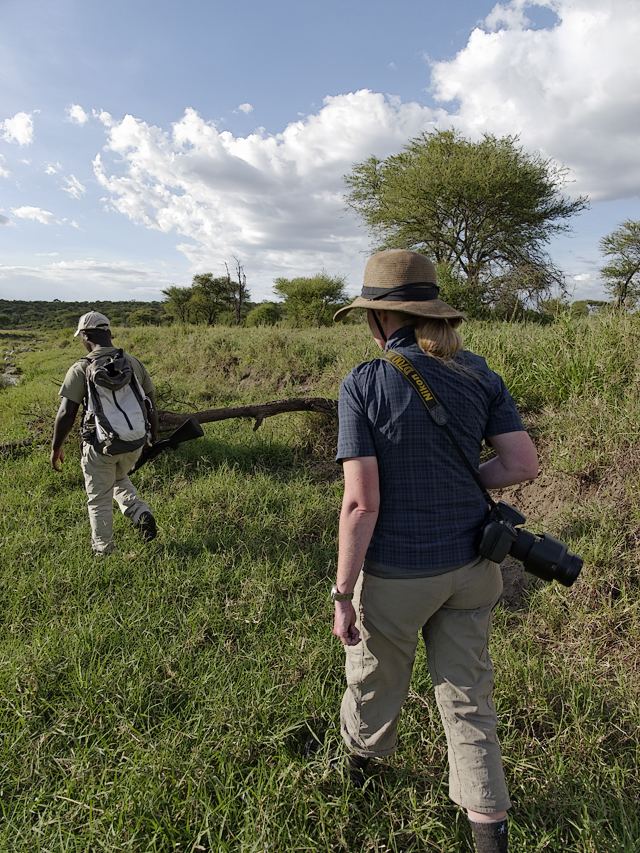
We came to another place in the riverbed where tracks showed that hippos recently passed by (last 24 hrs):
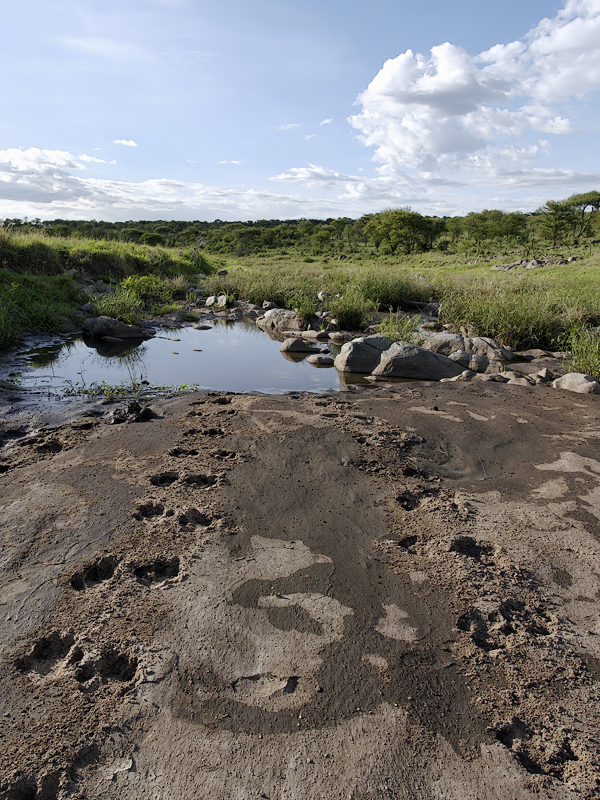
The river was not full enough to flow, but rain could change that at any moment. The guides were alert.
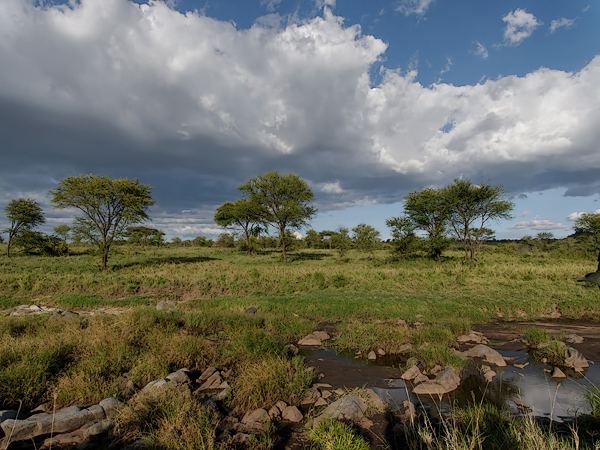
Prim made sure we got to see an antlion up close. It's one of the "little five" !
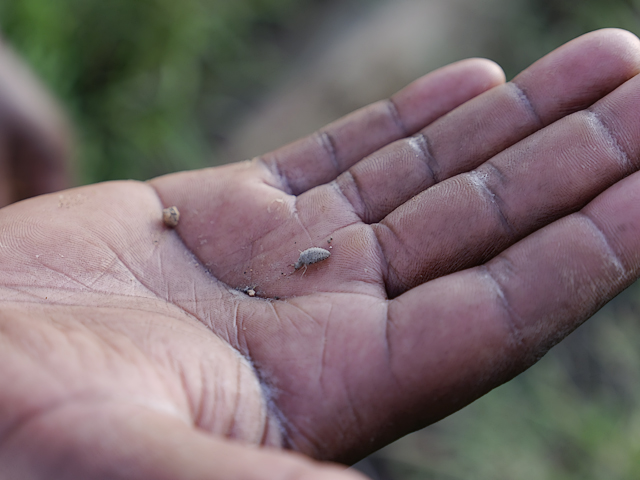
Here is a more technical photo of an antlion, courtesy of Wikipedia:
 Source: Wikipedia (Jonathan Numer)
Source: Wikipedia (Jonathan Numer)
Prim showed us an antlion's trap. He tried putting bugs in there to see an antlion attack, but no luck:
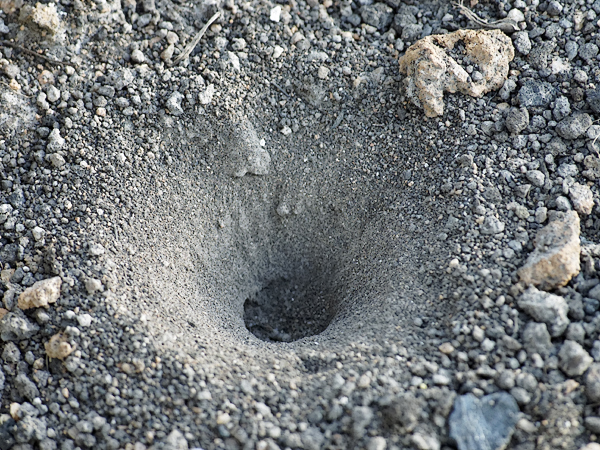
However, there are plenty of videos on the web that show an antlion attack better than we ever could:
Now late in the afternoon, the weather appeared somewhat inconsistent across the horizon.
In the west (looking into the sun), there were threatening clouds...
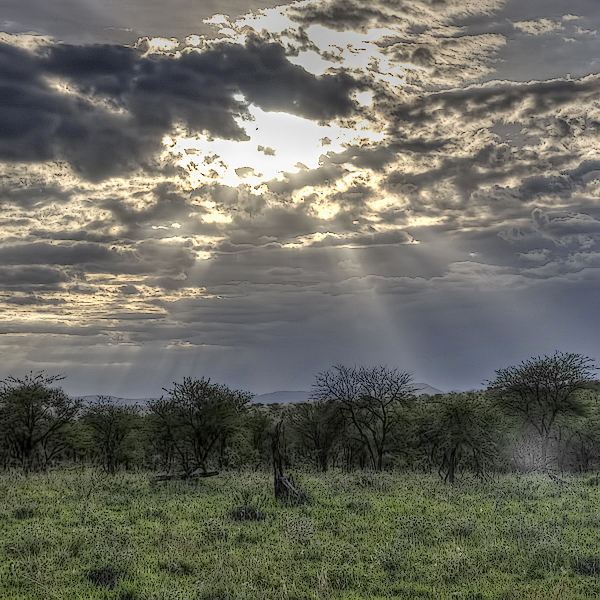 Note: above photo was bracketed and HDR/tonemapped using Photomatix
Note: above photo was bracketed and HDR/tonemapped using Photomatix
...off in the distance, an acacia forest glowed green with hazy clouds overhead...
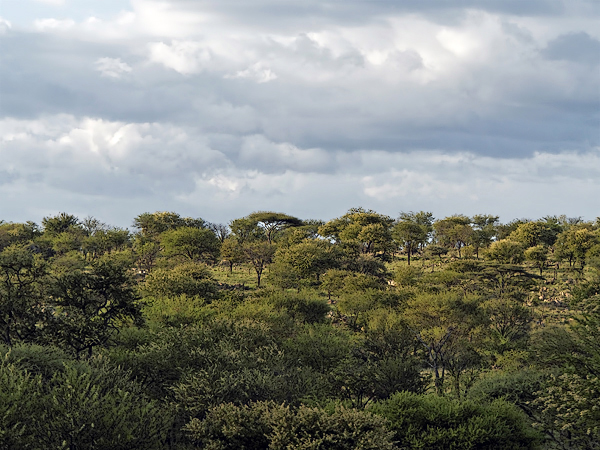
...but to the east (sun at our backs) skies were pretty clear with the brush a little drier & more brown. Interesting.
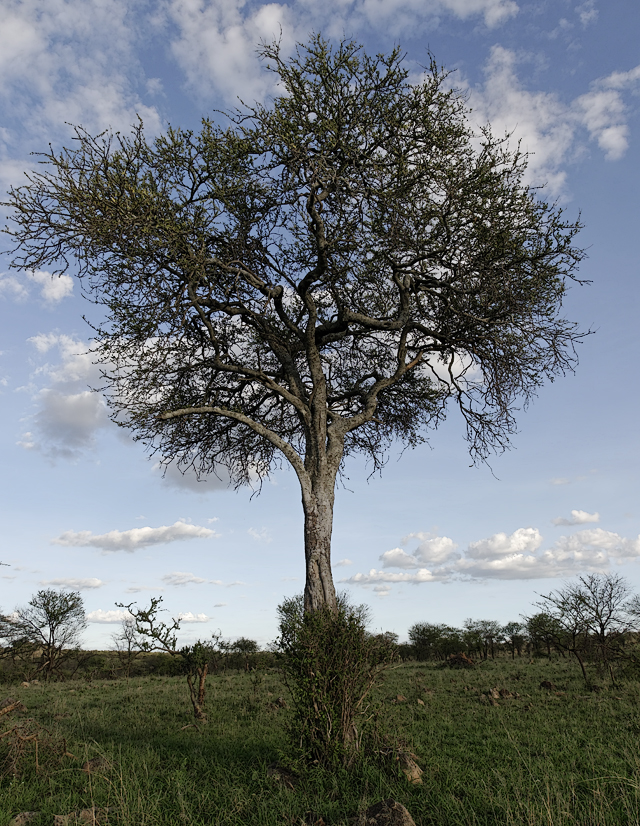
Our guides -- and the park ranger -- were always on the lookout for animals (even though they avoid humans).
Just after the halfway point in the walk, they hit the jackpot. The sun was at our backs, and the wind in our faces. Therefore, for animals walking towards us, we would be downwind and partially shielded by the sun's glare.
Fortunately, Prim spotted the animals before they detected us. Two jackals walking right at us, 100m away.
Jackals are very skittish, and Prim explained later that this was a rare occurance, to see them so closely.
The guides motioned us to be as quiet as possible & to squat down - to remain undetected as long as possible.
Frau A and I tried photos and video, but it was tough with a lot of grass and bushes in the way.
I got this photo when the jackals were first spotted, and still walking closer towards our position:
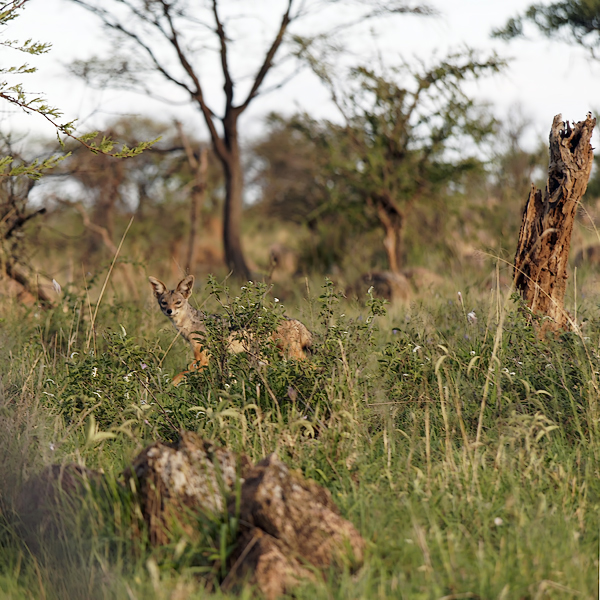
The video and other pics are not great, but I was able to cherry-pick some still frames from the video file:
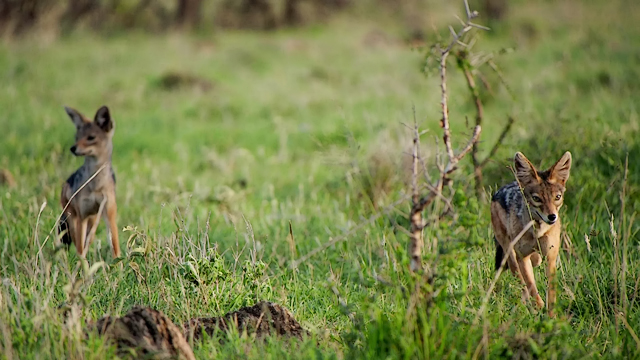
This was their closest point, and the moment when the leading jackal discovered us. Then they were gone:
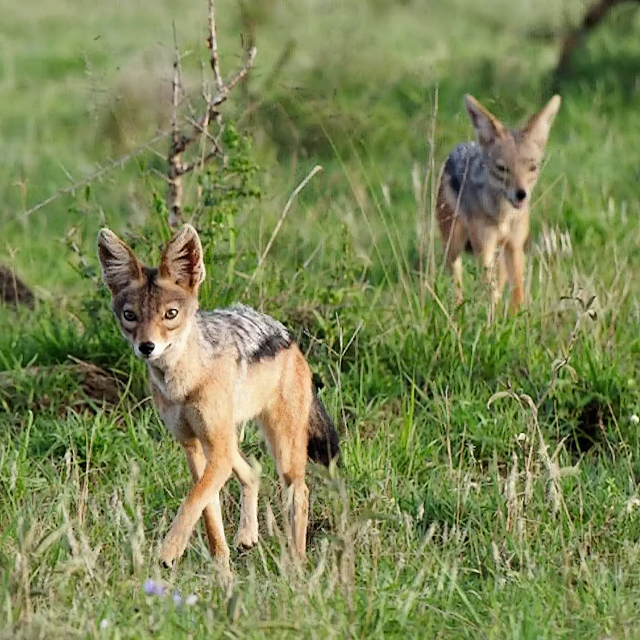
That was awesome! It really felt like you were THERE. Hiding in the bush; no zoo, no jeep, just us & nature.
It doesn't have the WOW factor of the big game, but this is the unique experience we were hoping for.
(We think these are the smaller black-backed jackal, also called the silver-backed jackal.)
From here we turned across a rocky plain and continued in the direction of camp:
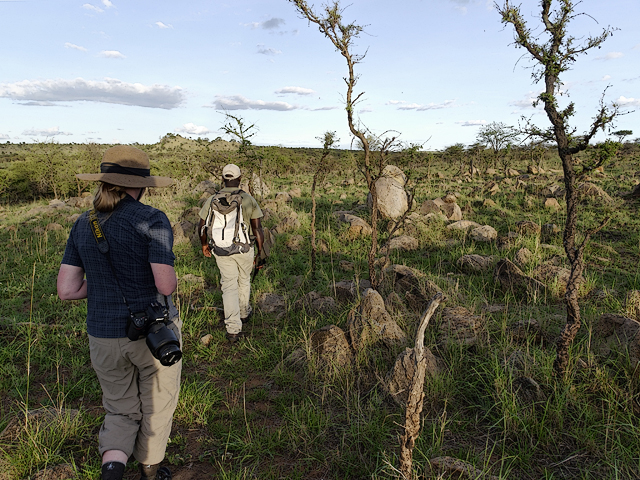
I snapped a couple of nice silhouette-style photos of Prim as we skirted over larger piles of rocks:
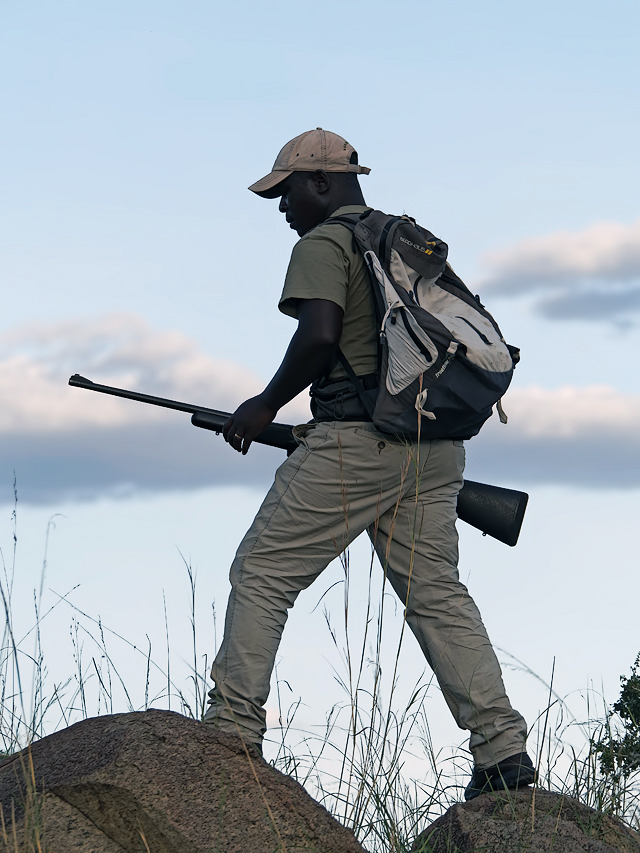
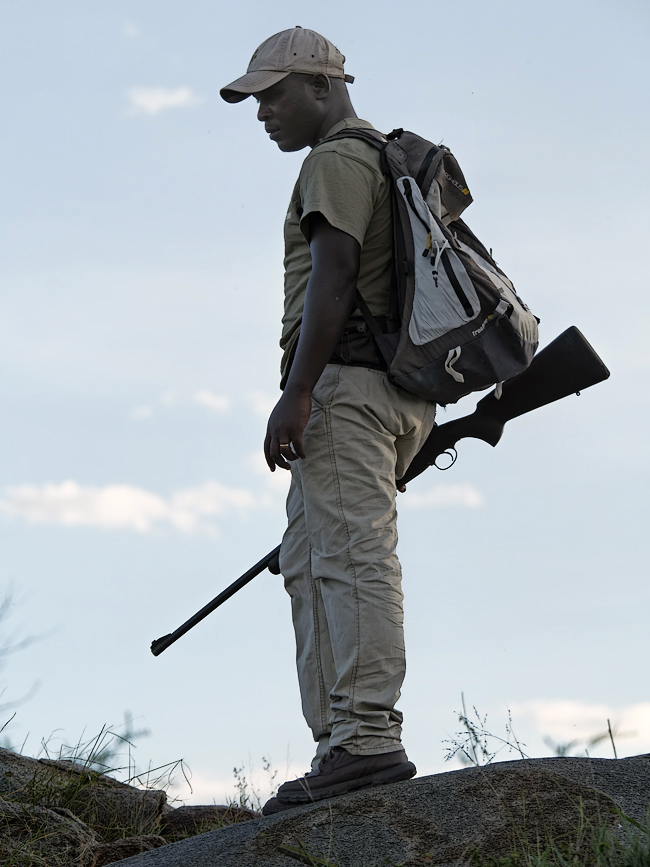
As we took a moment to take in water, we had our guides pose for a photo (Prim on left, Mark right):
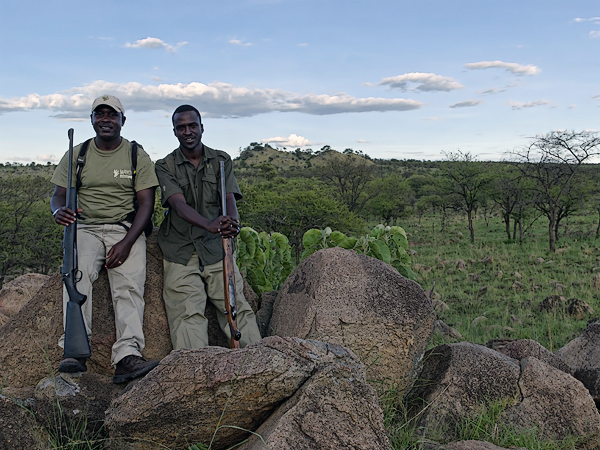
On our morning walk we saw termite mounds, but they were inactive and the new owners stayed out of sight.
This one was abandoned too, but taken over by a mongoose family who took a second to check us out from afar!
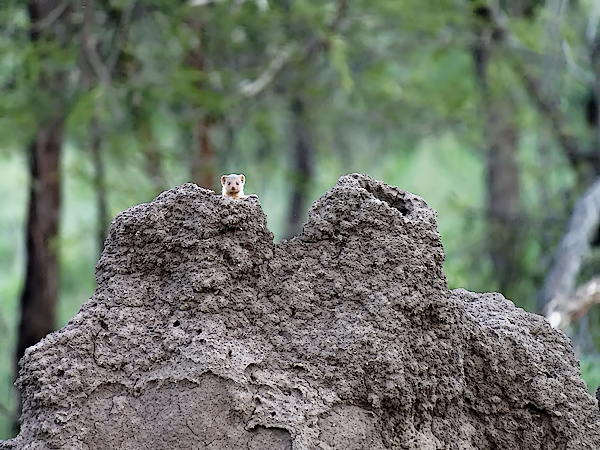
We saw three or four of the family appear, but most were gone in a flash. This one was more patient.
Of course, I cannot think of "mongoose" without remembering Rikki-Tikki-Tavi. (do kids still watch that?)
The clouds continued to blossom here and there, but the rain stayed away to the west:
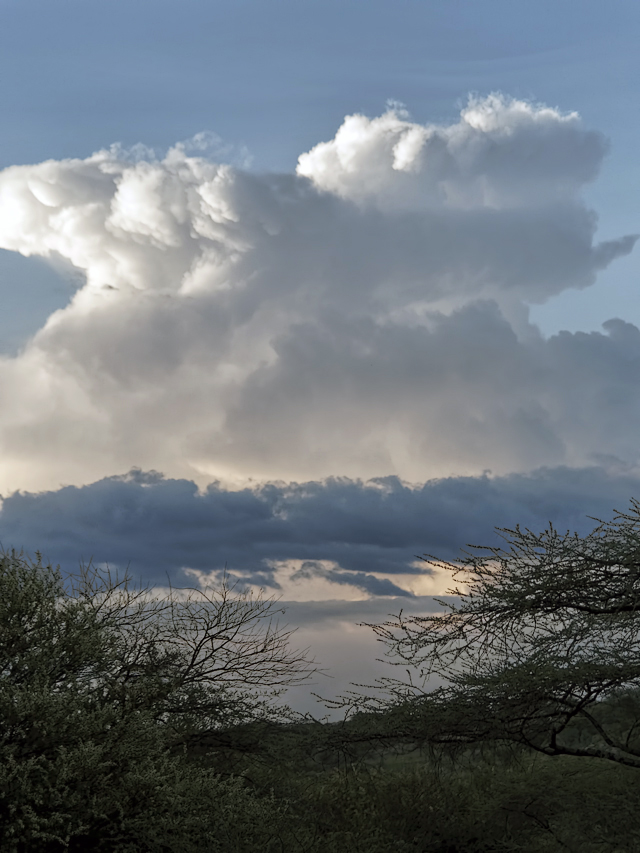
Some parts of the riverbed had no water at all -- still greener than everywhere else, but no pools here:
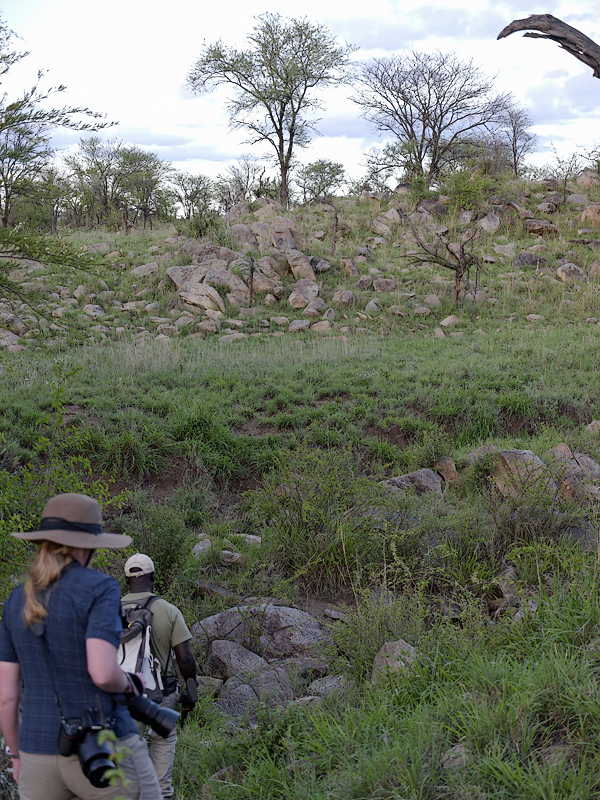
I captured Frau A once when she turned around. It's good practice for that quick Serengeti wildlife. ;)
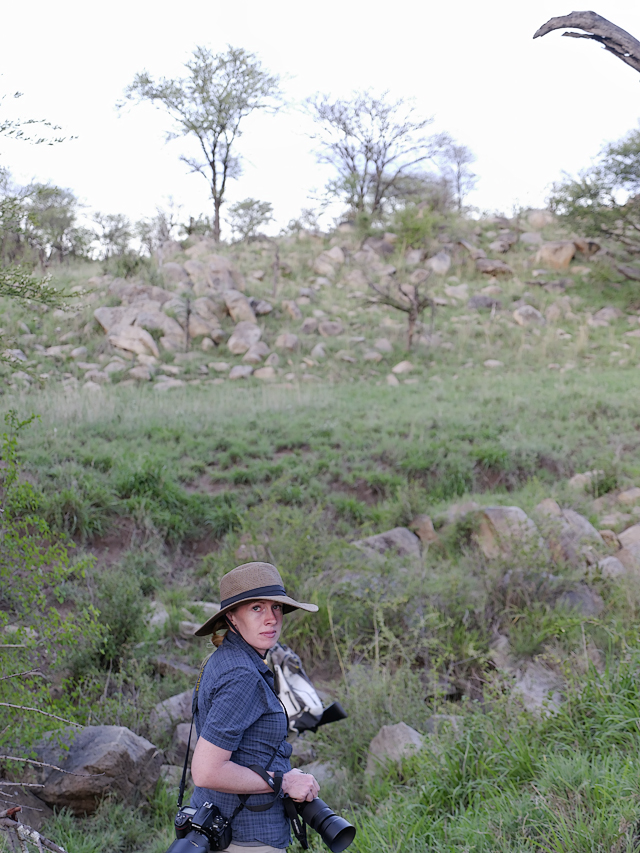
As soon as we crested the next bank...
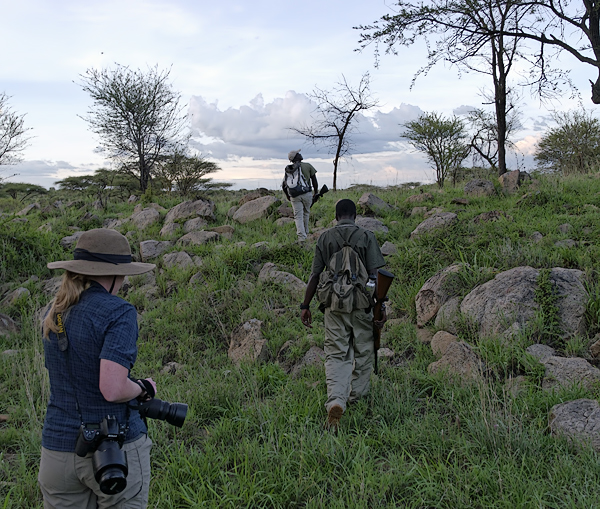
...we were on the home stretch. The dining tent is in the background, just to the right of Prim.
Mark is swatting away tse-tse flies, that were a bit of a bother around the acacia trees (got a few bites).

From here it's back to the tents to wash up a bit, and start thinking about dinner:
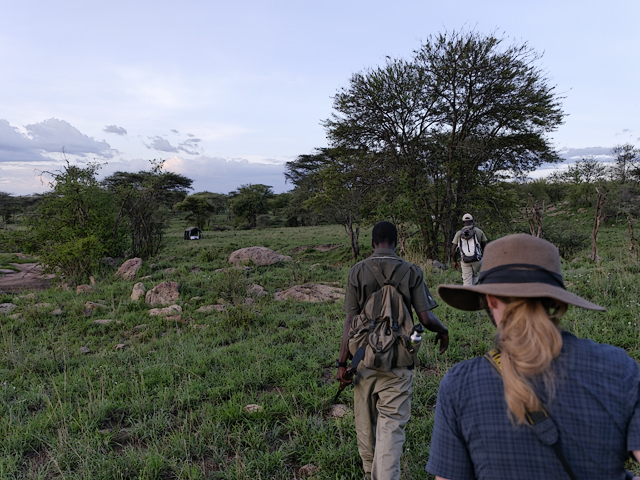
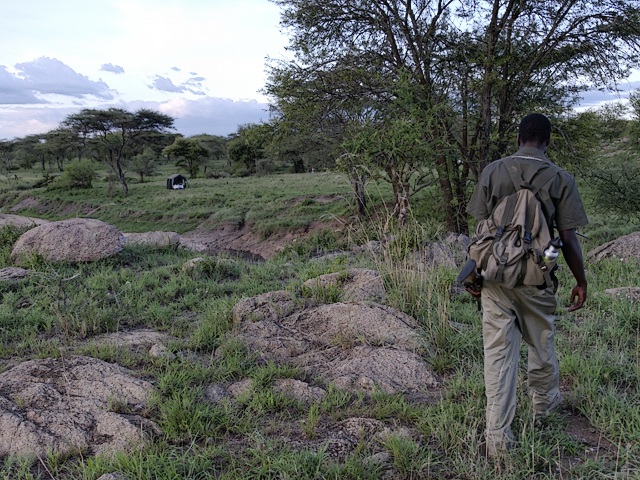
Here's "our" section of the Orangi river, with the sandy "newspaper" that Prim likes to read... if it rains overnight, then tomorrow we will have a fresh record of the animals that came so close to our tent during the night!
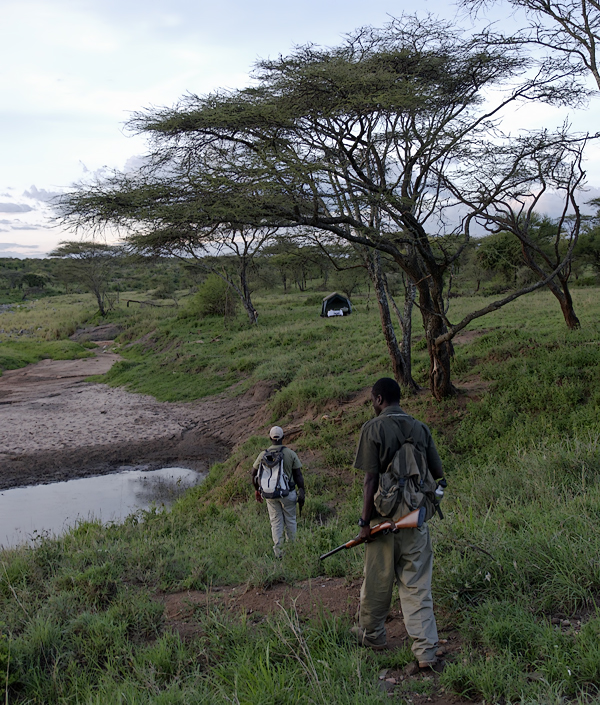
It was a little slow going at the end - the light was really nice, so I stopped a lot to take photos:
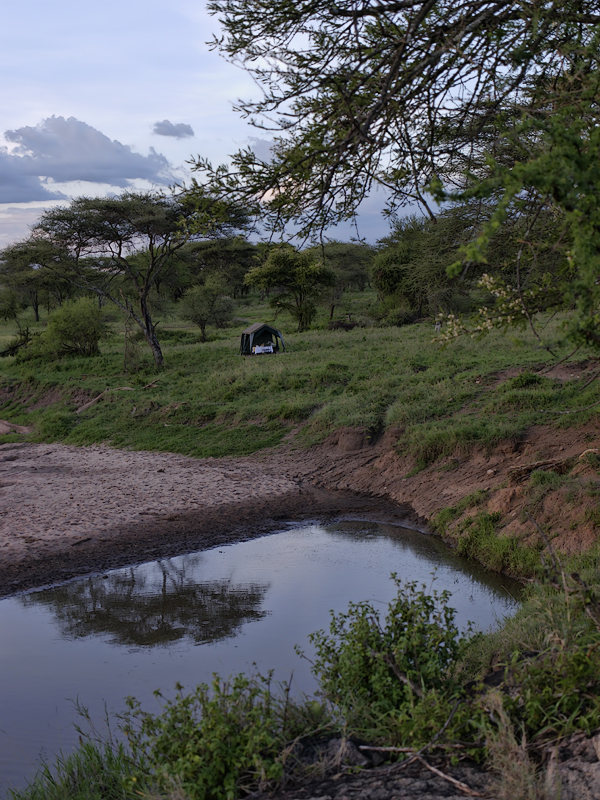
The camp staff (two of them) already had a fire going and were starting on dinner:
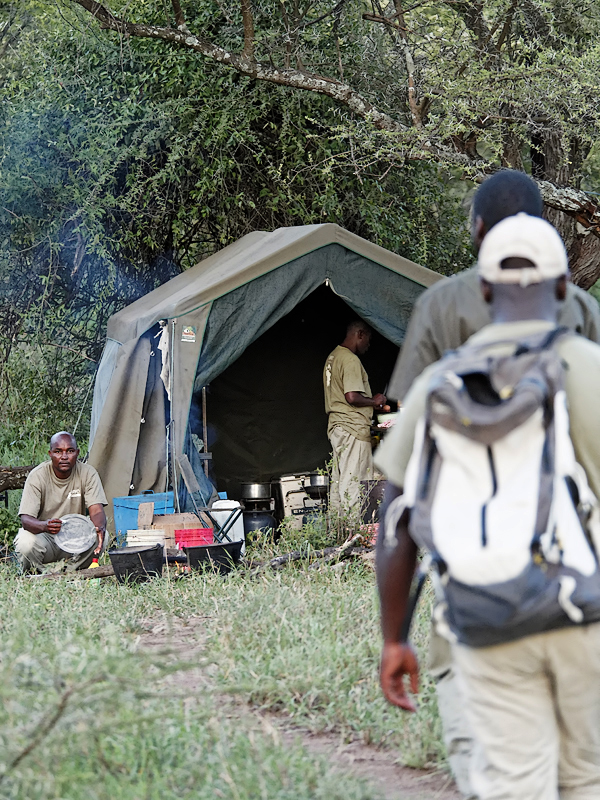
Across the riverbank, on the other side of the camp, a small herd of wildebeest were gathering.
They would be staying close together during the night, when the predators would be after them:
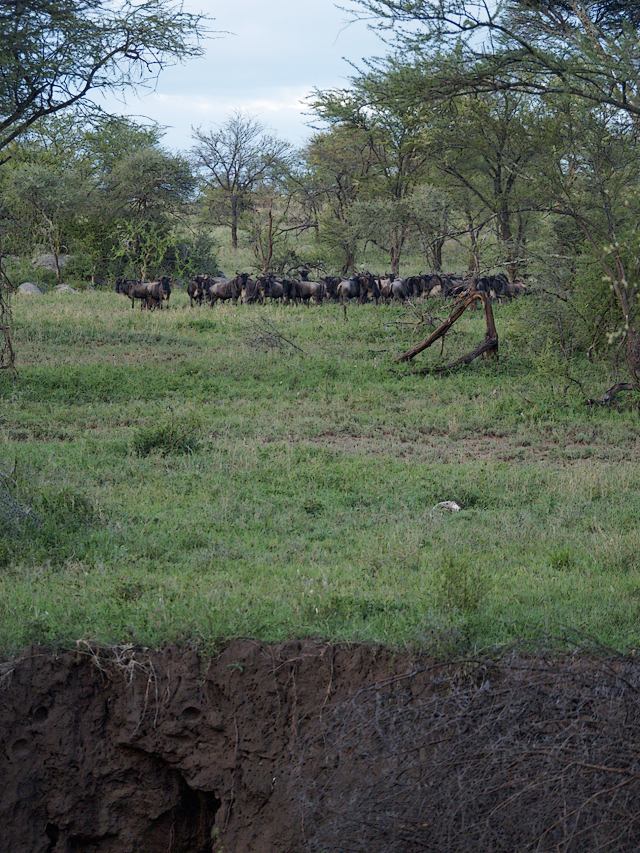
Yes, that night while lying in the tent, we heard lion roars, leopard roars, and hyena barks - not too far away.
The "bathroom" tent was a few meters away, and it made the trip there (with just a flashlight) interesting!
The clouds we saw earlier gave us a nice effect over the mess tent as the sun was setting:
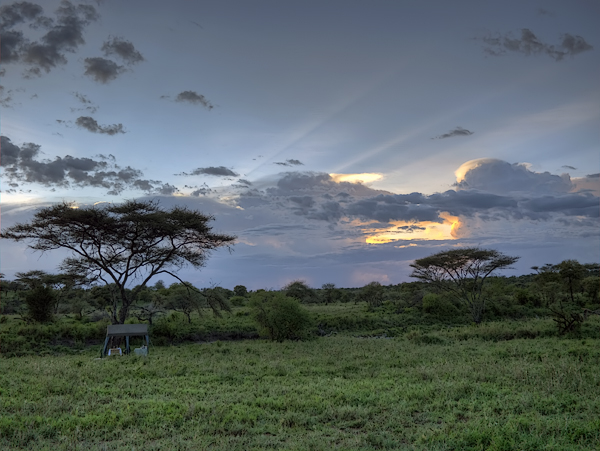 Note: above photo was bracketed and HDR/tonemapped using Photomatix
Note: above photo was bracketed and HDR/tonemapped using Photomatix
Just like the evening before, we had a fire going near the meal tent and headed there to eat & relax:
 Note: above photo was bracketed and HDR/tonemapped using Photomatix
Note: above photo was bracketed and HDR/tonemapped using Photomatix
After the sun was gone, and before heading to bed, we tried some photos with a light painting technique:
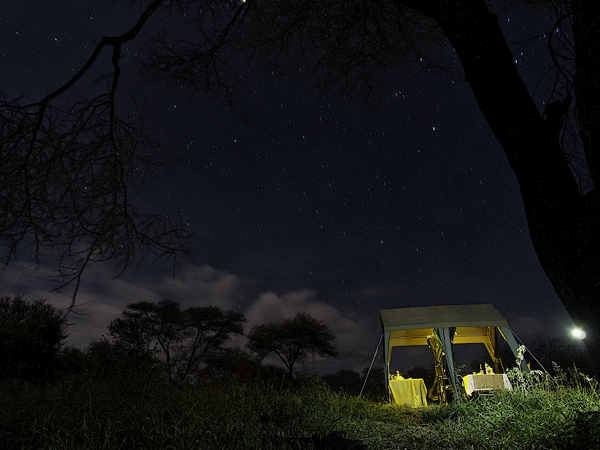
Not bad for the first time, and by a couple of hackers! We were inspired to try by this light painting video:
By then it was time to crash. We were tired -- a good tired, if you know what I mean.
It did rain again that evening, but just a soft rain. The lightening stayed in the distance.
We had another full day (two walks) to look forward to tomorrow, and hope they would be just as fun.
And finally... this was our honeymoon. For the wedding, instead of registering for physical gifts (e.g., china, silverware, etc.), we registered different parts of this Tanzanian safari. For this blog post, we wish to heartfully thank:
- Edie C, for the guided walk. You can see how much we learned with our guides. THANK YOU!
- Amie and Kevin H, for the guided walk. The jackals were amazing!. THANK YOU!
- Judy and Ron H, for the camping overnight. What a great view of the Serengeti. THANK YOU!
- Ronnie and Jan M, for the camping overnight. It was dry, comfortable, (and great beer). THANK YOU!
We hope our friends and family enjoy the pictures and story as much as we did living it.
 Herr J ...
Herr J ...  Post a Comment
Post a Comment  Travel tagged
Travel tagged  Orangi River,
Orangi River,  Serengeti National Park,
Serengeti National Park,  Tanzania,
Tanzania,  ant lion,
ant lion,  hippo tracks,
hippo tracks,  jackal,
jackal,  kopjes,
kopjes,  mongoose,
mongoose,  termite mound ...
termite mound ...  Print Article
Print Article  Email Article
Email Article 



